Modern minimalism isn’t about stripping the soul out of a cooking space; it’s about letting every surface, light beam, and storage nook work harder so the room feels calm, efficient, and quietly luxurious. Designers keep refining the look with ultra-sleek cabinetry, concealed technology, and sustainable finishes that make the kitchen fade politely into open-plan living while still performing like a pro workspace. Recent trend round-ups point to handle-free doors, “invisible” appliance suites, and discreet LED lighting as the hallmarks of 2025’s most sought-after kitchens, proving that restraint can be both practical and beautiful.
1. Handleless Kitchen Cabinets Streamline Every Surface
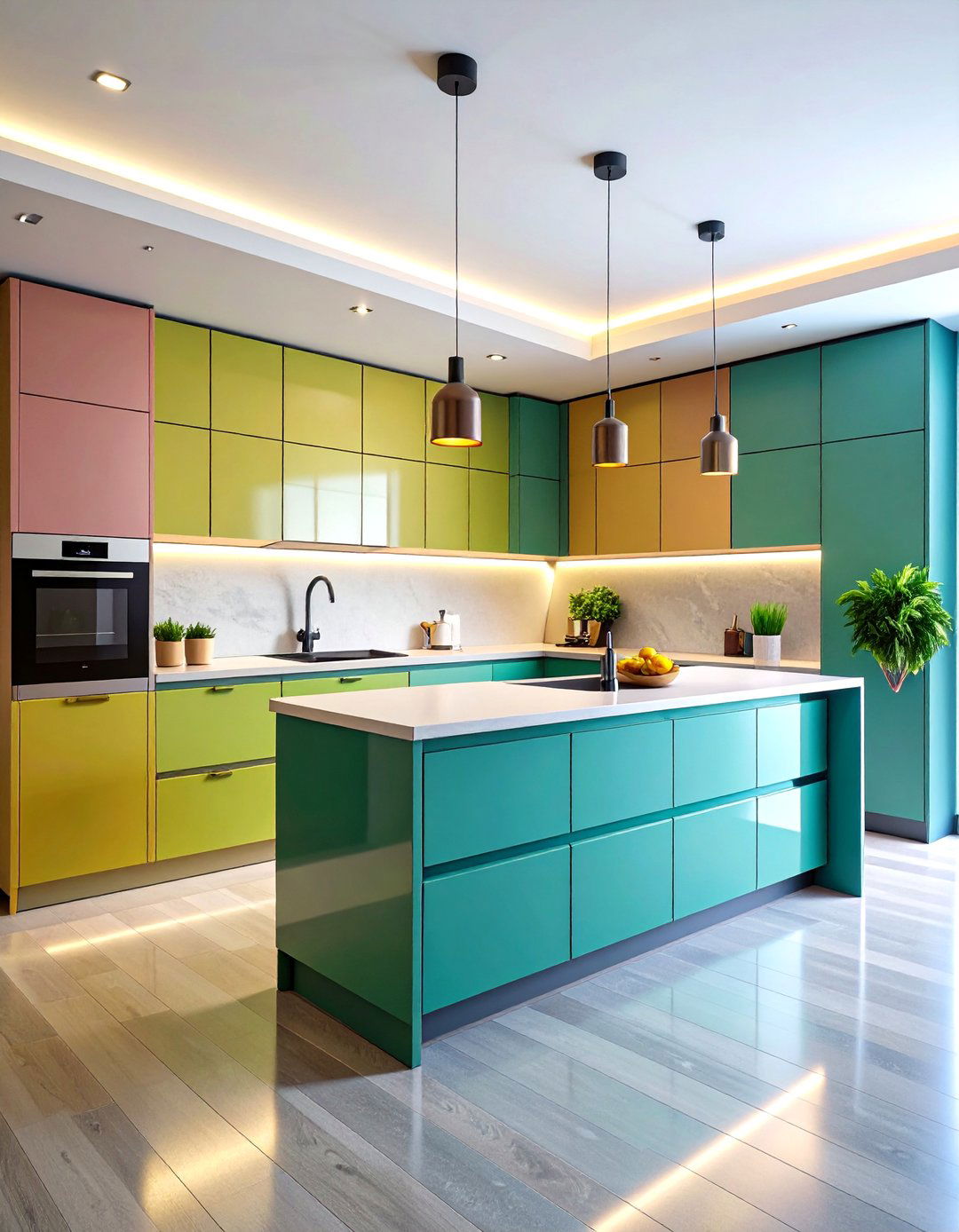
A minimalist kitchen immediately feels lighter when cabinet doors open with a gentle push rather than a bulky pull. Handleless fronts use channel grips or push-to-open hardware so the eye sees an unbroken plane of wood, lacquer, or laminate, amplifying the room’s clean geometry. Designers love the detail because fingers land where the door edge is already recessed, eliminating knobs that catch clothes or collect grime. For a subtle glow, many teams tuck LED strips inside the channel to accentuate those crisp horizontal lines after dark.
2. Concealed Appliances Keep the Kitchen ‘Invisible’

An “invisible” kitchen hides its hardest-working parts behind panels that match the surrounding millwork, turning the cooking zone into what looks like a piece of furniture. Tall refrigerator columns wear the same color as adjacent cupboards, dishwashers vanish behind base-cabinet fronts, and bulky mixers retreat into appliance garages until needed. The payoff is powerful: countertops stay free, sightlines into living areas remain undisturbed, and post-party clean-up feels less urgent because the mess is literally out of sight.
3. Black-and-White Kitchen Adds Crisp Monochrome Drama

A strict black-and-white palette turns a minimalist kitchen into a graphic statement that never looks dated. White upper walls bounce light, while matte black lowers anchor the space and disguise scuffs. The absence of mid-tone colors sharpens every edge, so architects often specify ultra-thin quartz counters and linear pulls to keep the look razor-clean. Add a single wood stool or brass faucet for warmth without clutter, and the room reads sophisticated instead of sterile.
4. Soft Neutral Palettes Create a Calming Kitchen Canvas
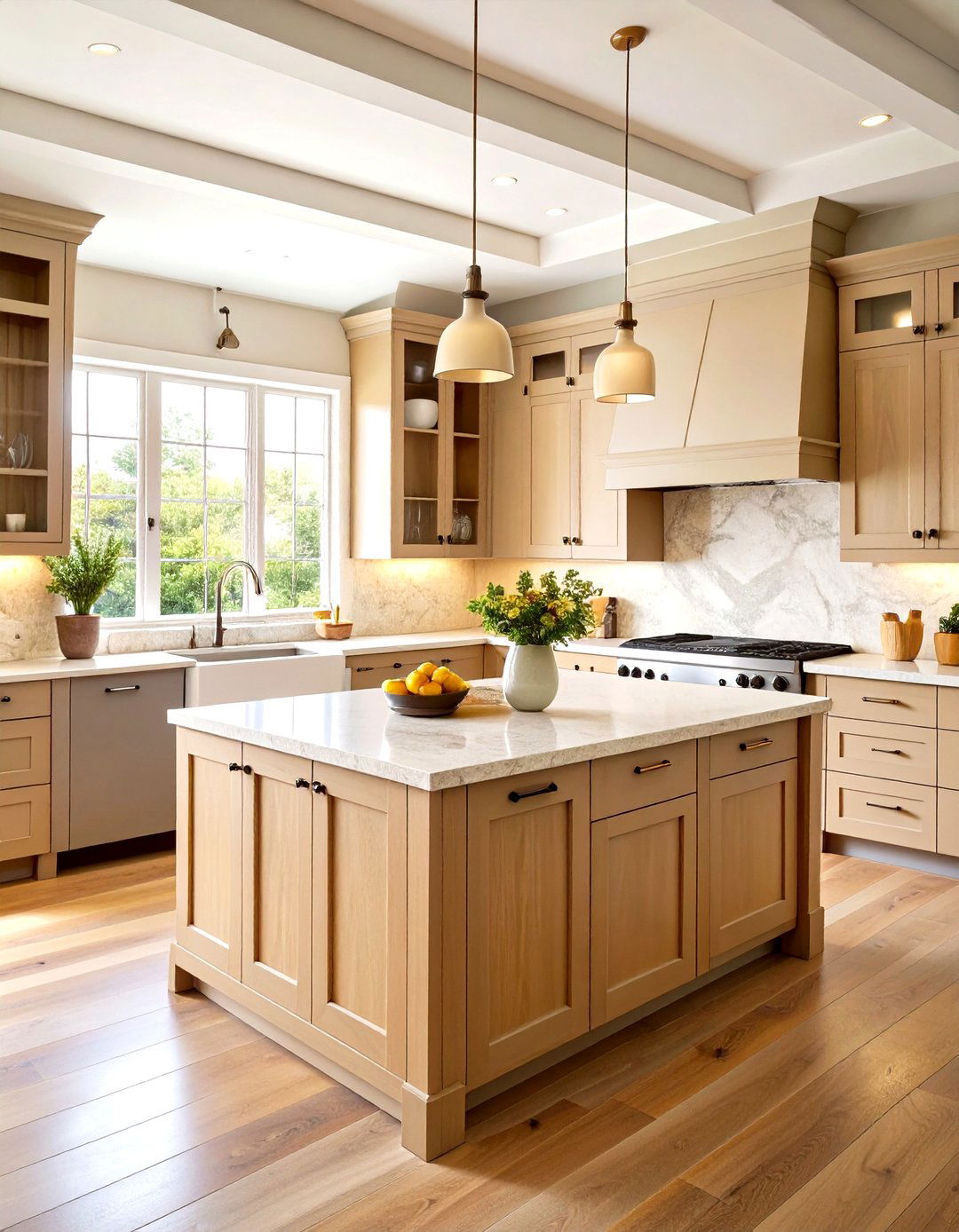
If monochrome feels too bold, enveloping the kitchen in layers of taupe, oatmeal, or warm gray offers serenity without sacrificing minimalism. Neutral laminates or painted MDF absorb light evenly, hiding small imperfections better than stark white. Because the palette is quiet, texture becomes the star — think fluted oak panels or honed limestone backsplash — letting cooks enjoy visual interest that never shouts. Pair with color-matched outlets and slimline pulls to preserve the uninterrupted planes that define the style.
5. Quartz Countertops Simplify Upkeep
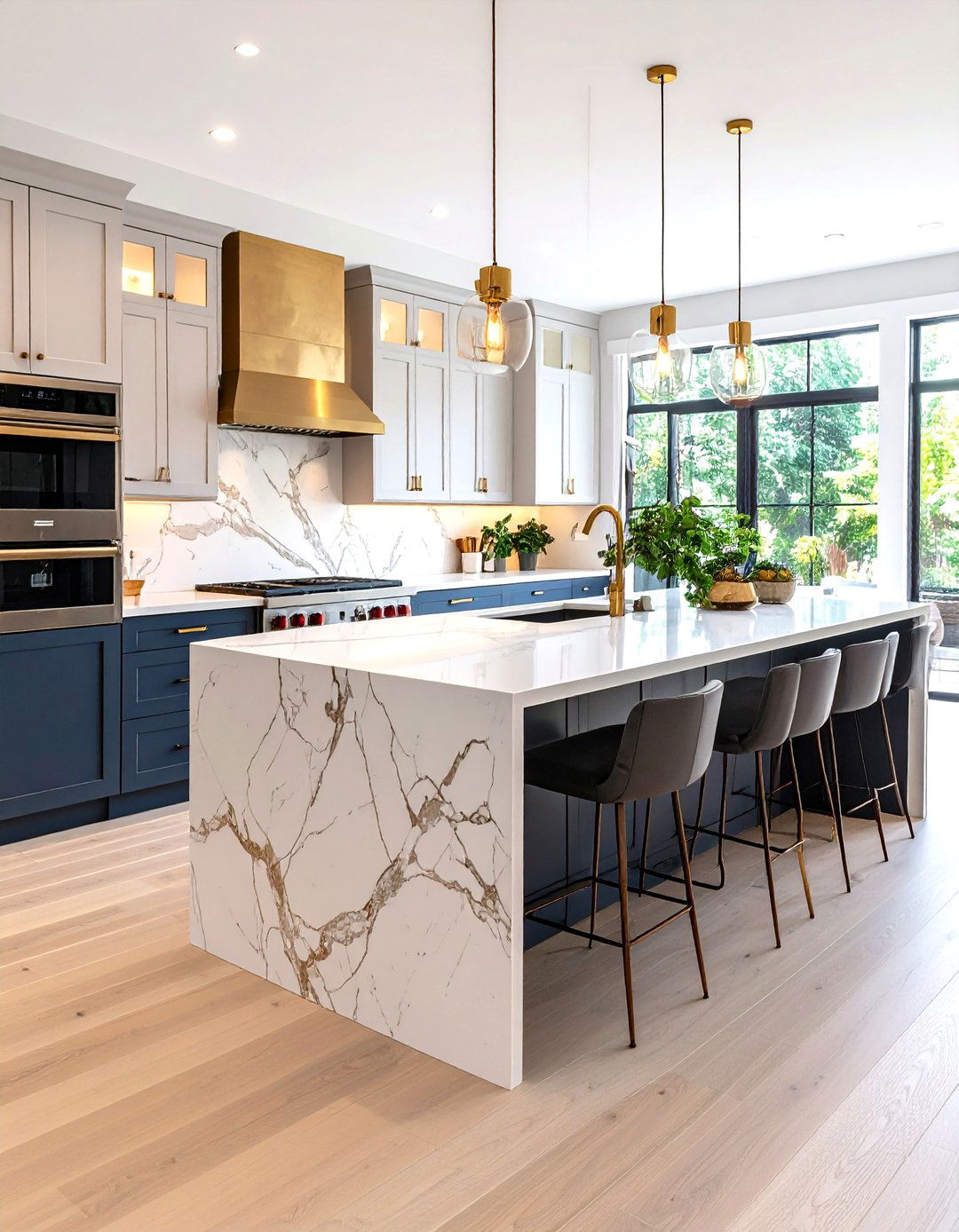
Minimalist kitchens succeed when materials require as little fuss as the design itself. Quartz countertops fit the brief: non-porous, stain-resistant, and virtually maintenance-free. Unlike softer stones, quartz shrugs off acid etches from lemon juice or red wine and resists bacterial growth, making sanitizing effortless. Because slabs can be fabricated in large spans, seams are minimal, reinforcing the clean look. Choose a solid white to blend into cabinets or a delicate vein to add just a whisper of movement.
6. Waterfall-Edge Island Turns the Kitchen into a Sculpture

Draping countertop material down the sides of an island creates a seamless “waterfall” that doubles as functional art. The uninterrupted slab hides storage on the seating side and protects end panels from shoe scuffs, while visually anchoring the room. Marble, quartz, or concrete waterfalls echo the principles of minimalism — one strong gesture, impeccably executed — so nothing else needs to compete. Even petite kitchens benefit because the vertical drop makes the island look deliberate rather than bulky.
7. Floating Shelves Let the Walls Breathe
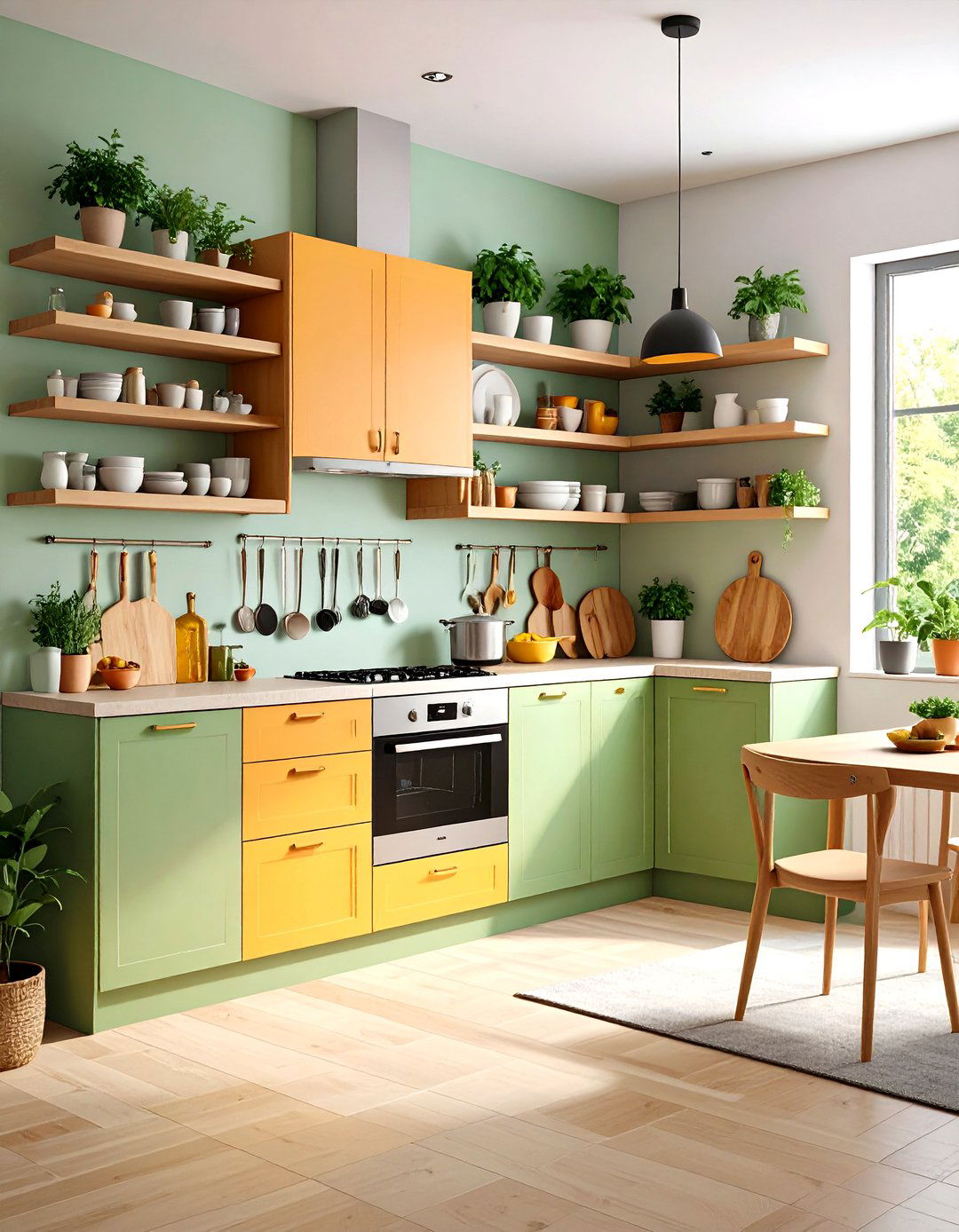
Swapping bulky uppers for a run of floating shelves instantly declutters a kitchen’s skyline. Open planks, preferably in the same wood species as the floor, supply just enough display for everyday dishes while encouraging owners to keep only what they love. Because shelves are shallow, natural light reaches farther into work areas, and visual weight stays near the base cabinets for grounded balance. The strategy earns extra points in studios and lofts where walls double as art backdrops.
8. Discreet LED Strips Highlight Clean Lines
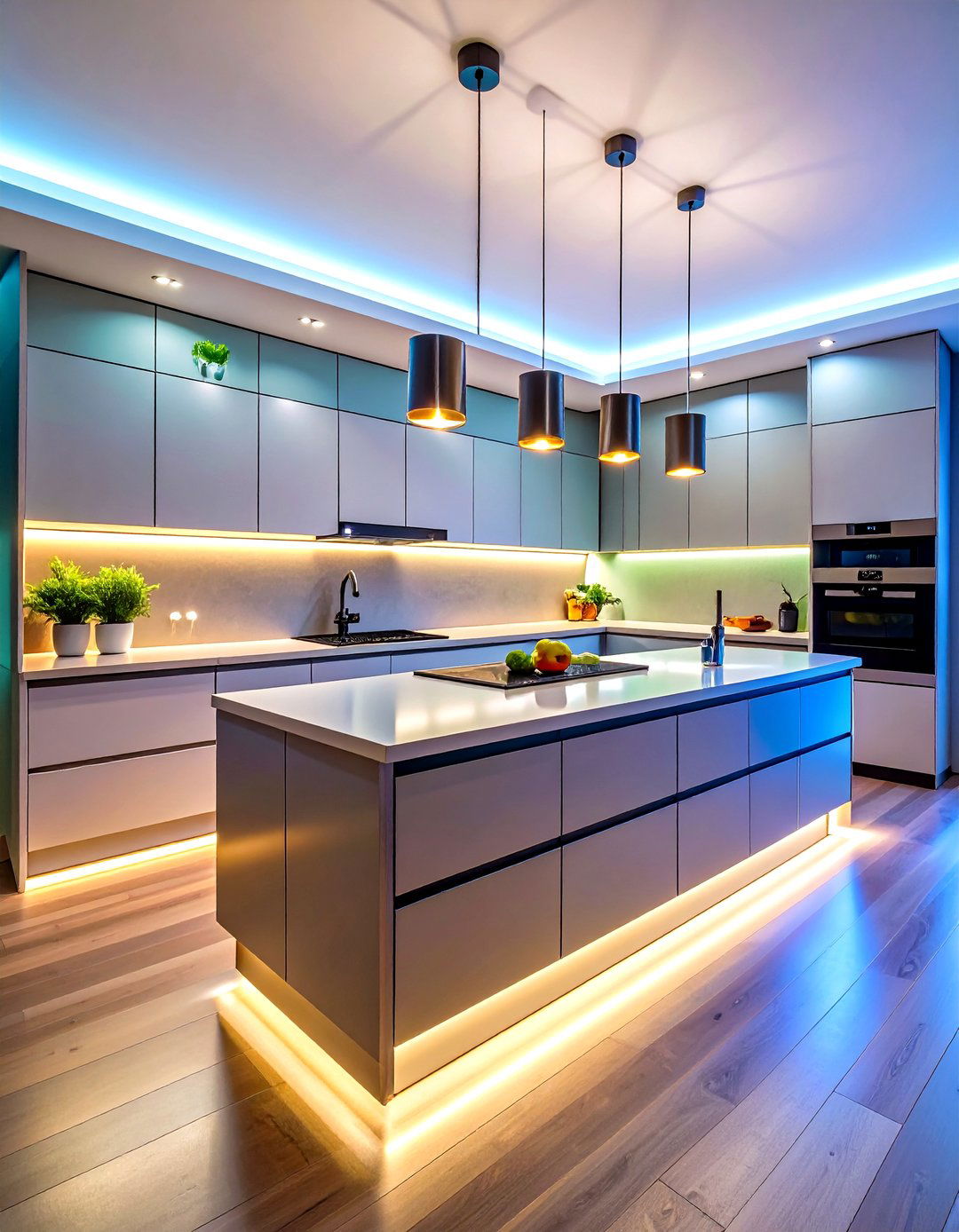
Minimalist kitchens rely on subtle lighting that sketches, rather than spotlights, the room. Slim LED tape hidden beneath wall cabinets, inside drawer boxes, or along toe-kicks casts an even glow without visible fixtures. Warm-white temperatures (around 3000 K) soften stone and wood, while cool-white (4000 K) accentuates glossy lacquer. Because LEDs sip energy and last years, homeowners enjoy lower bills and fewer bulb changes — both wins for a pared-back lifestyle.
9. Toe-Kick Drawers Rescue Wasted Inches
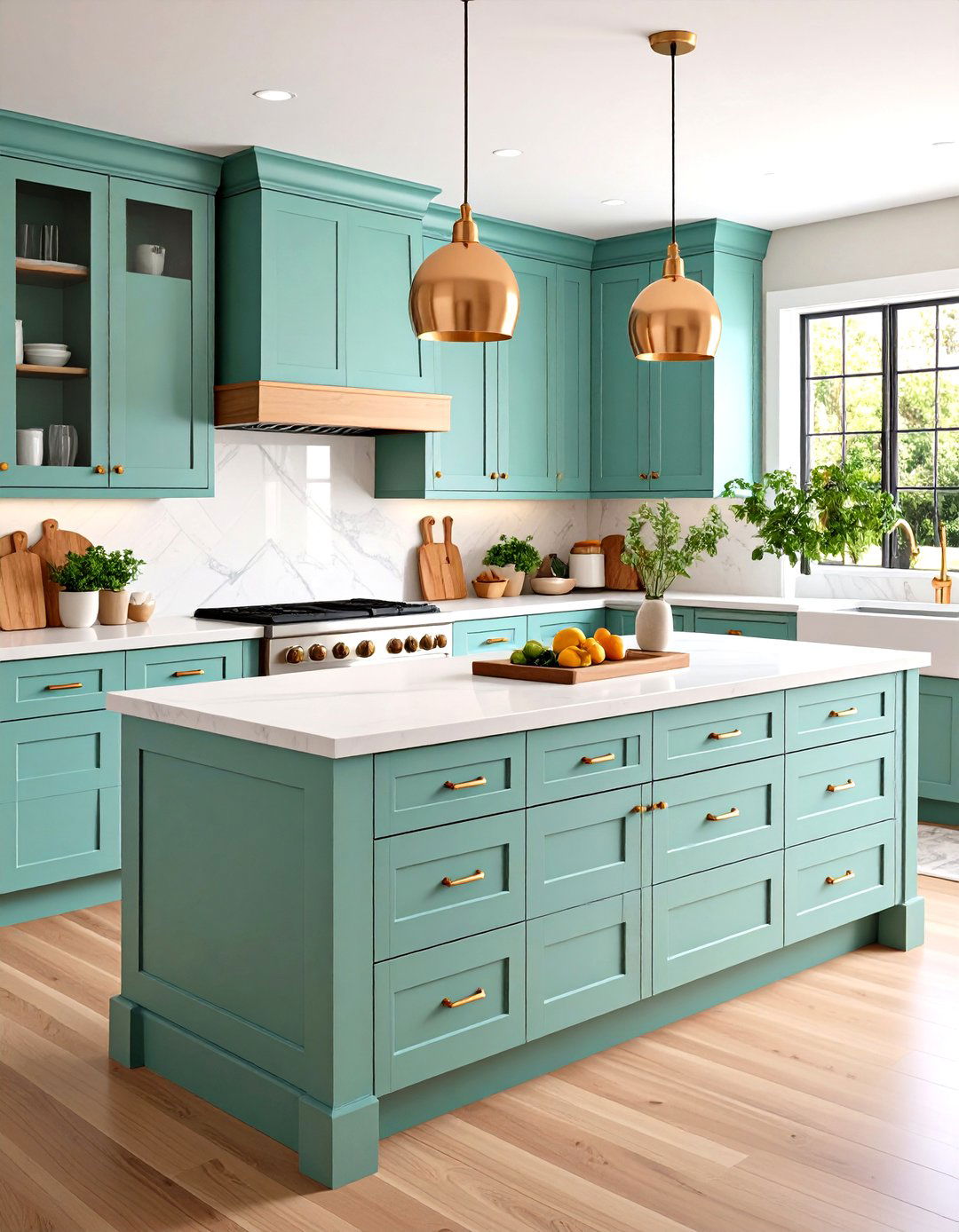
The four-inch void below base cabinets is prime real estate in a minimalist kitchen. Shallow toe-kick drawers, fitted with touch latches, stash baking sheets, linens, or pet bowls where dust bunnies once hid. They keep upper drawers thinner — maintaining sleek proportions — while making use of every cubic inch, a core minimalist principle. DIY versions use standard drawer slides mounted horizontally; pros integrate them from day one for a truly seamless façade.
10. Ceiling-Height Cabinets Banish Countertop Clutter
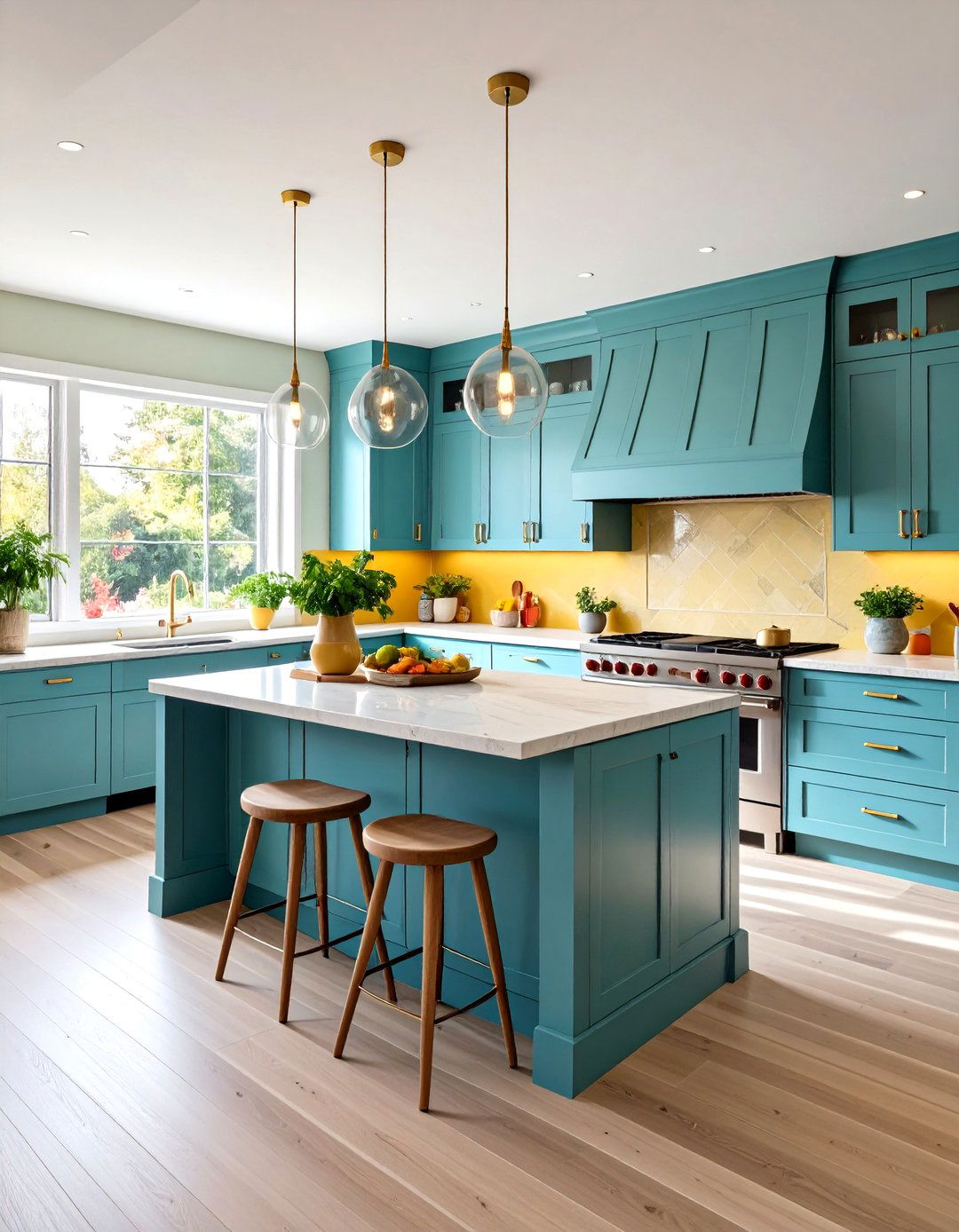
Running cabinets all the way to the ceiling not only maximizes storage; it removes that dusty ledge where décor tends to accumulate. The vertical sweep draws the eye upward, making small kitchens feel taller. Use the highest shelves for off-season cookware or bulk staples, keeping daily items within easy reach. For the neatest effect, finish the crown flush with drywall or use a shadow reveal instead of traditional molding.
11. Push-to-Open Hardware Keeps the Look Seamless
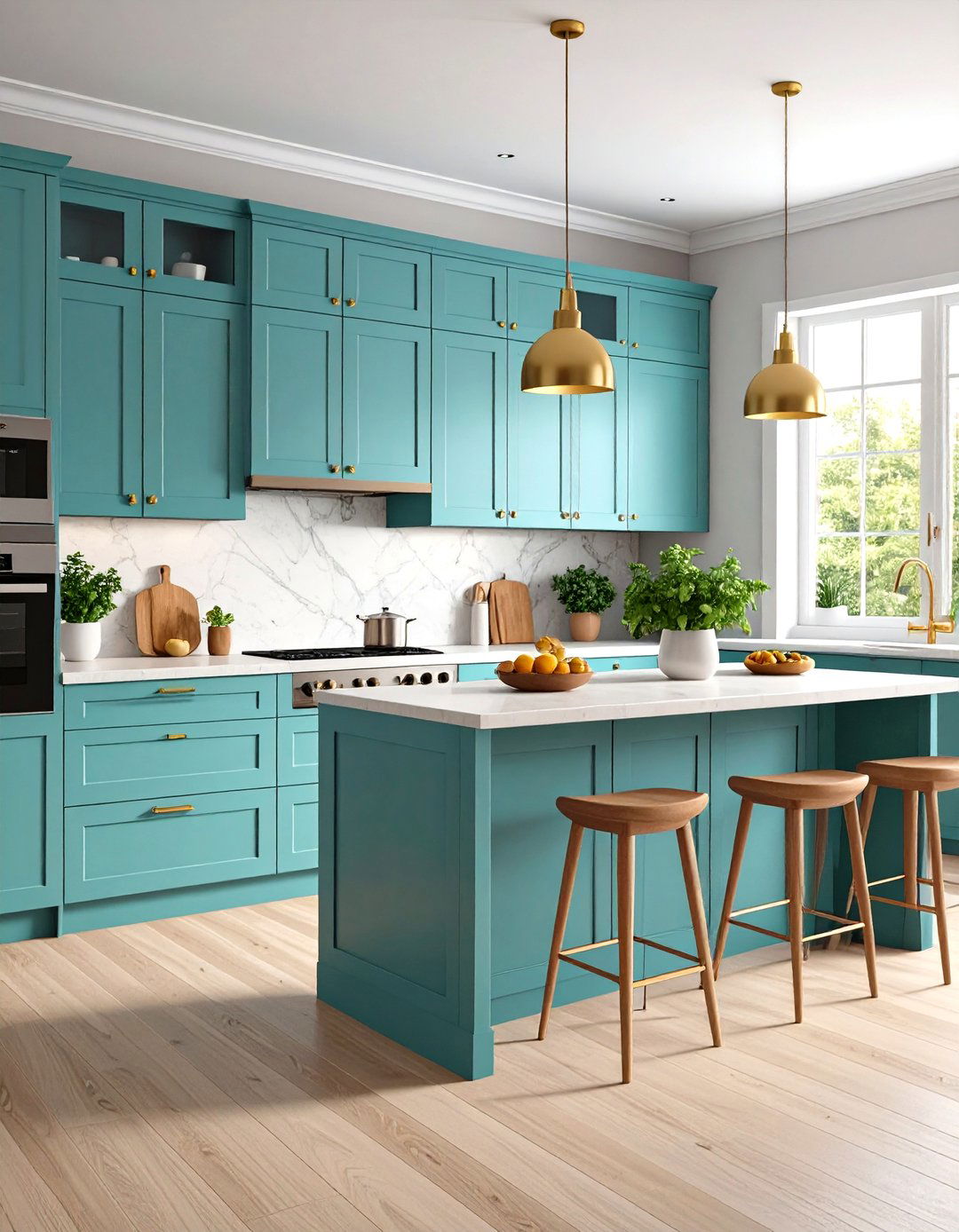
Even subtle knobs can interrupt a minimalist rhythm. Push-to-open latches let flat fronts read like a continuous wall when closed, revealing contents with a gentle tap. The mechanism pairs perfectly with matte finishes that mimic painted drywall, achieving the coveted “kitchen that doesn’t look like a kitchen. ” For heavier pantry doors, add adjustable tension hinges so the push effort feels feather-light.
12. Touchless Faucets Merge Hygiene with Minimalism
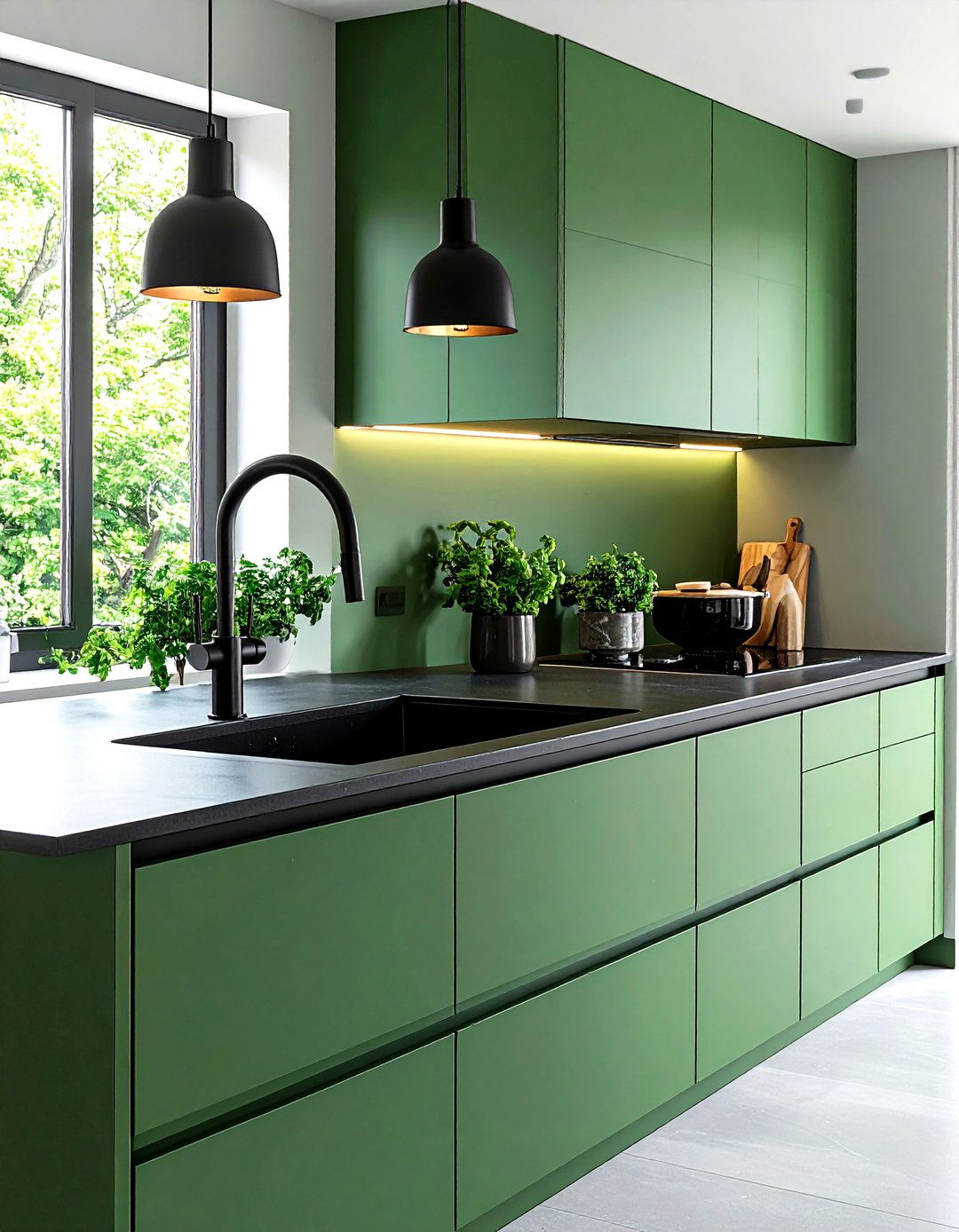
Hands-free faucets satisfy two minimalist goals: reducing visual clutter (no lever left askew) and streamlining cleanup (no smudges on the handle). Motion sensors activate water only when needed, trimming waste, while pull-down sprayers retract flush for a tidy silhouette. Choose finishes that echo cabinet hardware — matte black or brushed nickel — to maintain a restrained palette.
13. Eco-Friendly Appliances Align Form with Planet
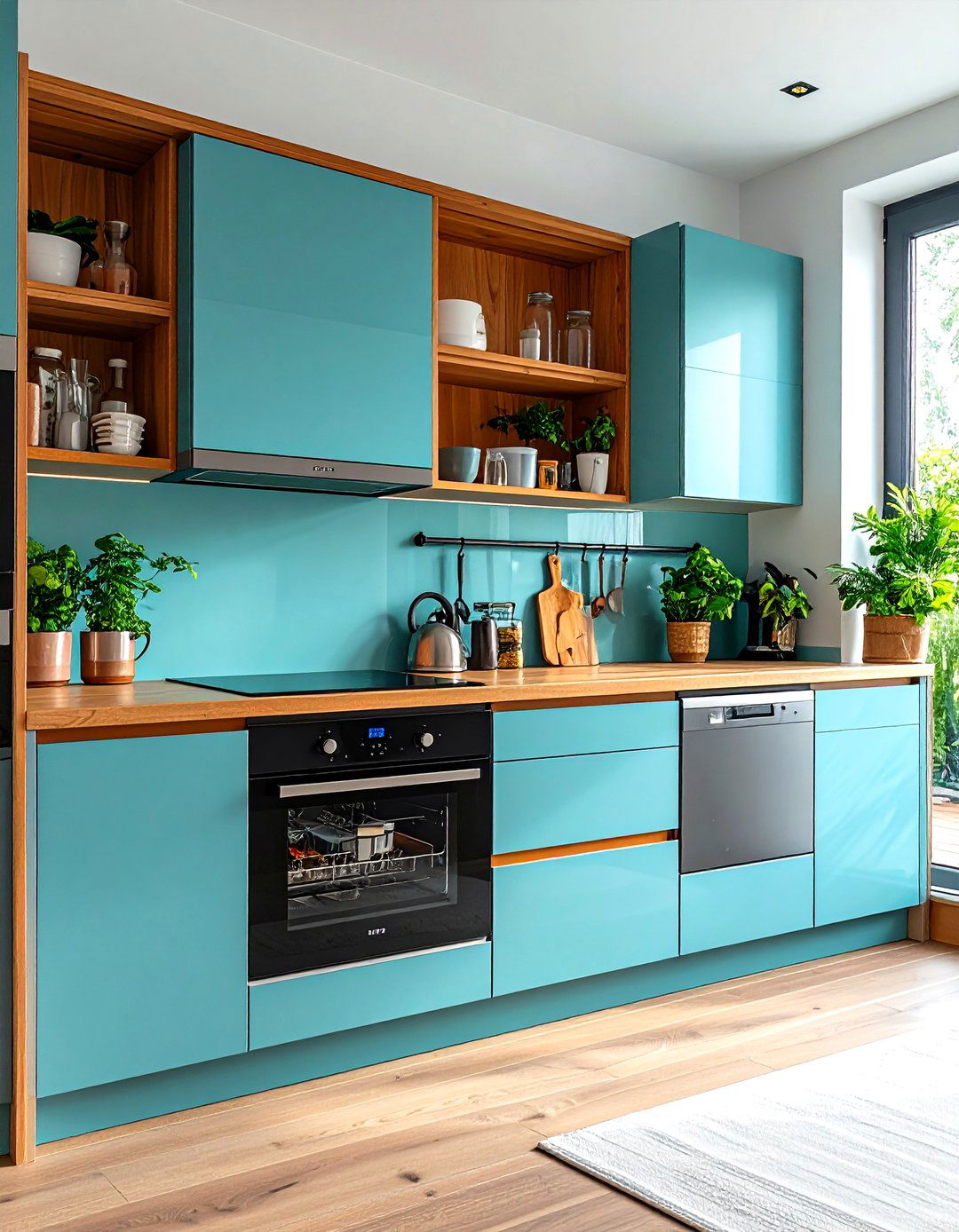
Sustainability dovetails with minimalism when energy-efficient induction cooktops and smart dishwashers cut both clutter and carbon footprints. Many 2025-grade models integrate behind panel fronts, display status via discreet LEDs, and connect to apps that optimize cycles based on actual soil levels — so you save water without thinking. Choosing appliances made from recycled steel or plastic further reinforces a “less but better” ethos.
14. Integrated Venting Preserves Sightlines

Traditional hoods can dominate a pared-back room. Low-profile recirculating vents, ceiling-mounted “halo” extractors, or downdraft systems built into the cooktop itself whisk away steam while disappearing almost completely. By eliminating a bulky canopy, designers keep lines uninterrupted and allow backsplash materials — stone, glass, or plaster — to become the quiet focal point.
15. Pull-Out Pantry Systems Reduce Visual Noise
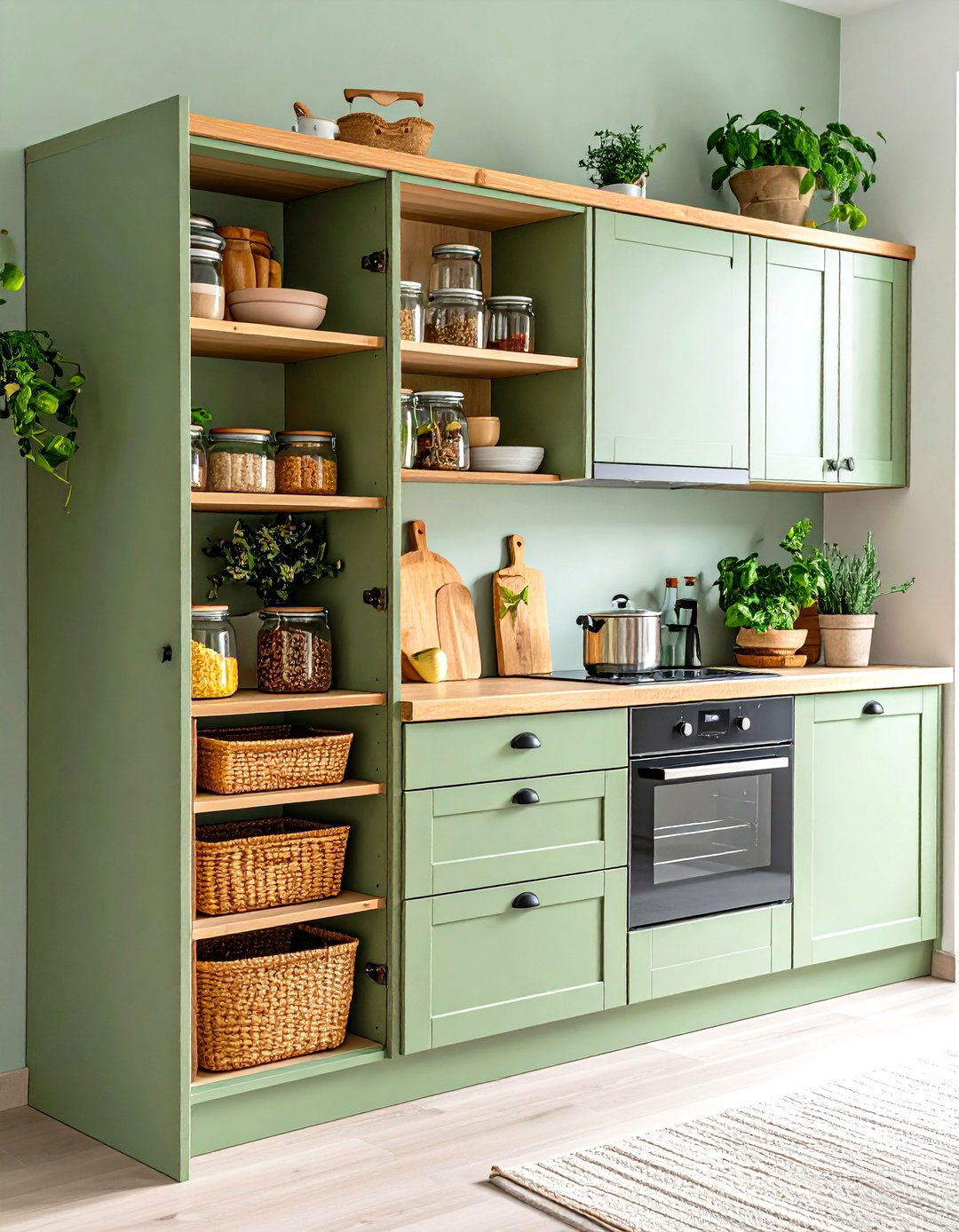
A single tall cabinet fitted with pull-out frames or internal drawers hides cereals, cans, and spices in a footprint no wider than 18 inches. Because contents slide toward you, labels stay visible, so there’s no need for open shelves or countertop canisters. Soft-close runners and clip-on sides let you reconfigure tiers as grocery habits change, keeping the kitchen flexible yet orderly.
16. Matte Finishes Hide Everyday Fingerprints
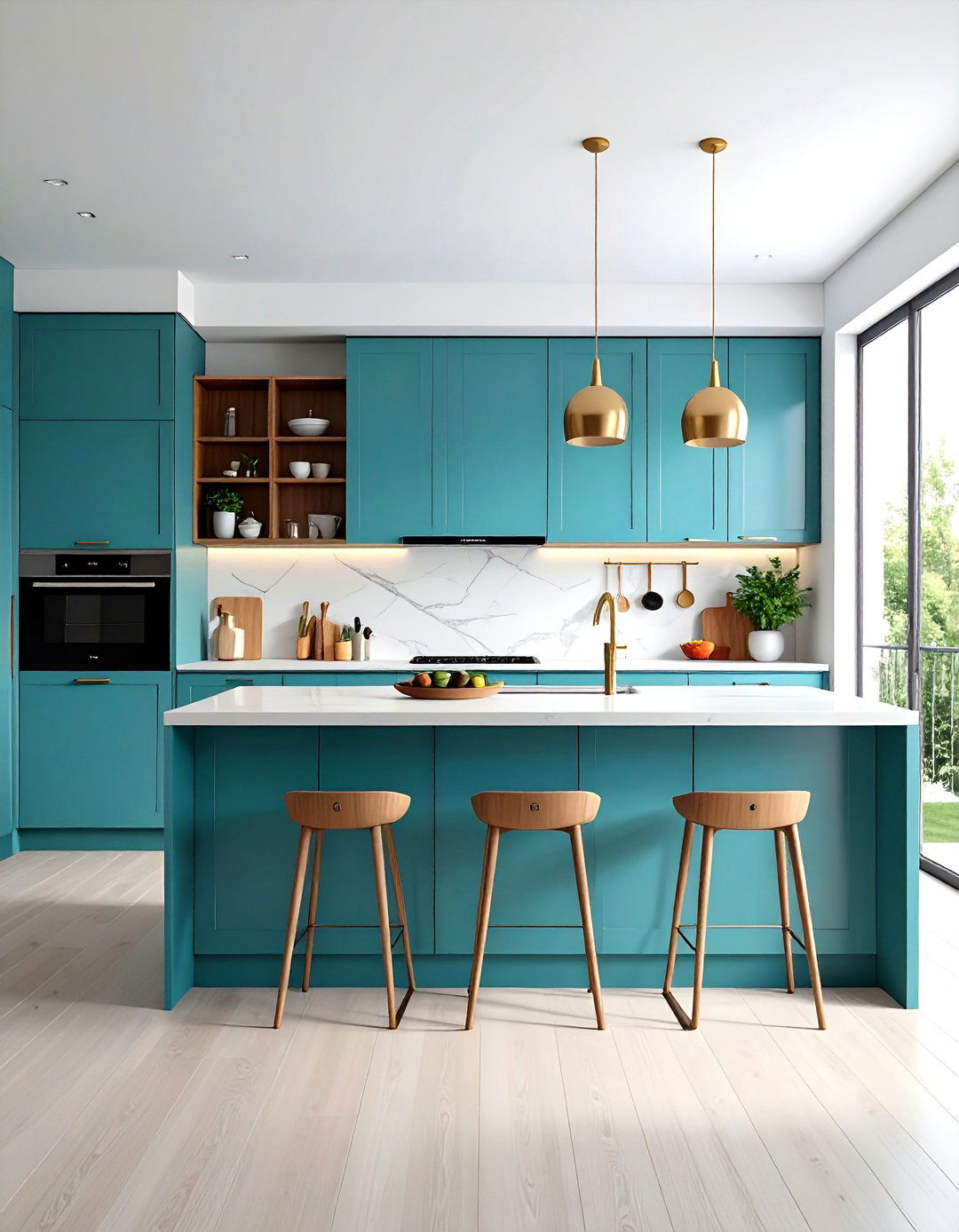
Glossy lacquer shows every smudge, undermining that freshly uncluttered vibe. Modern matte paints and velvety laminates diffuse reflections, making surfaces feel softer and easier to maintain. Fingerprint-resistant technology baked into the finish means less wiping — an underrated advantage when your design mantra is “own less, clean less. ” Pair matte lowers with a honed countertop for textural harmony.
17. Minimalist Pendant Lights Provide Sculptural Glow
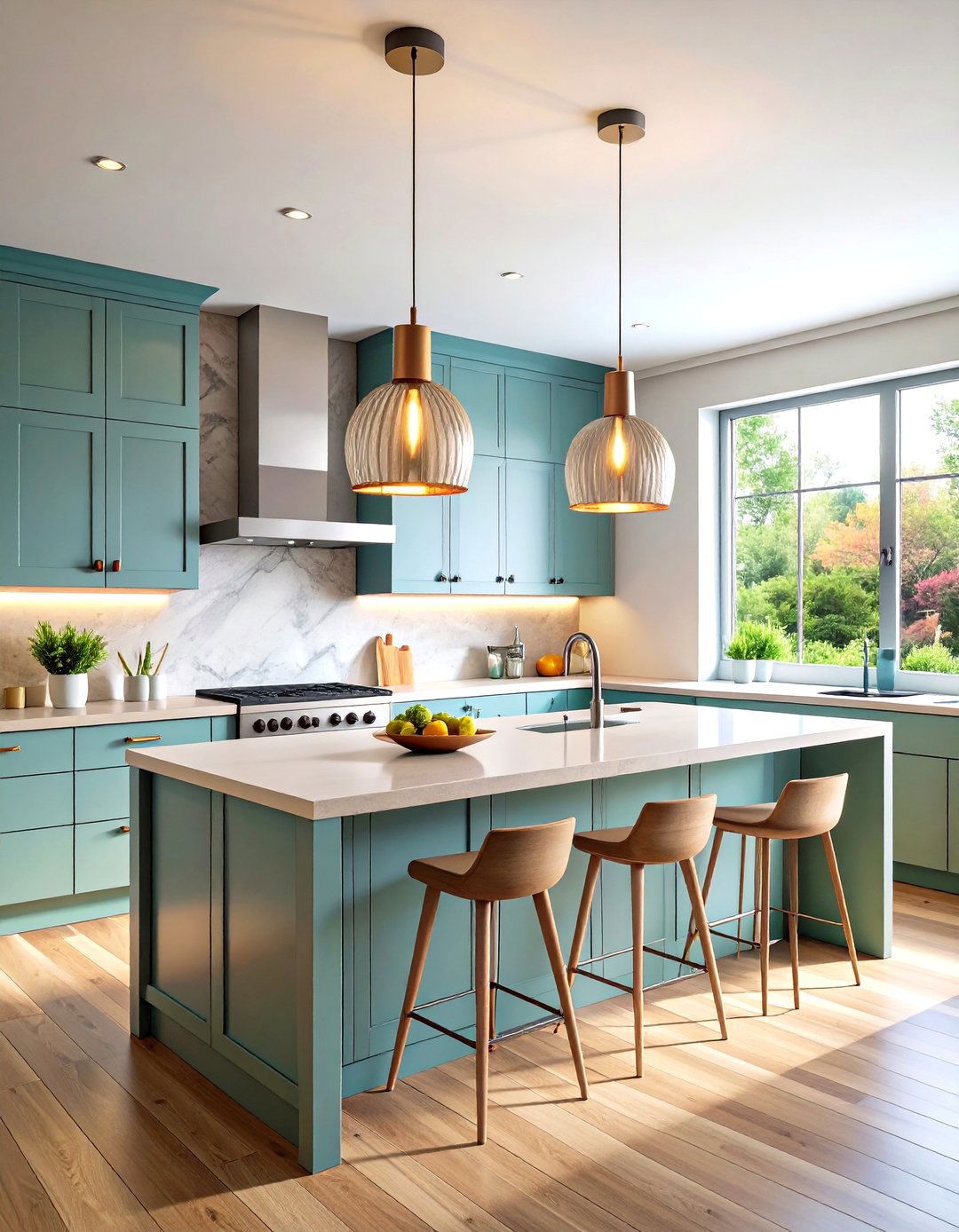
One or two simple pendants — think slender cylinders or frosted globes — over an island act like jewelry for an otherwise restrained kitchen. Their shapes add gentle curvature that softens all those straight cabinet lines, while targeted downlight doubles as task lighting. Keep cords black and canopies compact so the fitting seems to float.
18. Glass Backsplashes Expand Light and Space
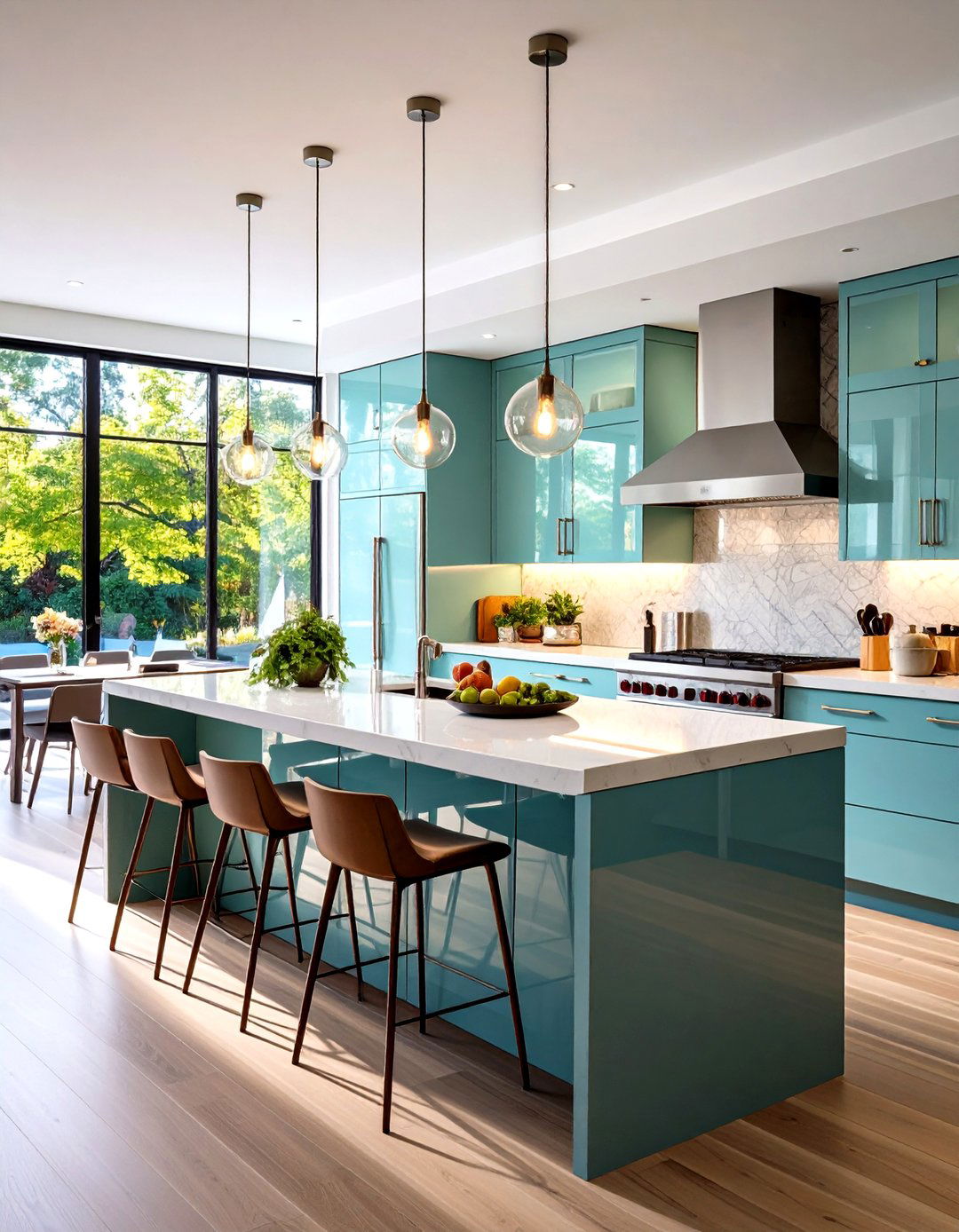
A full-height sheet of tempered glass eliminates grout lines, reflects daylight, and wipes clean with a single swipe, aligning perfectly with minimalist upkeep goals. Clear glass lets painted walls show through for a tone-on-tone effect, whereas back-painted panels create a seamless swath of color that won’t fade. The high-gloss surface also amplifies under-cabinet LEDs for a subtle luminous wash.
19. Drawer-Based Bases Improve Ergonomics
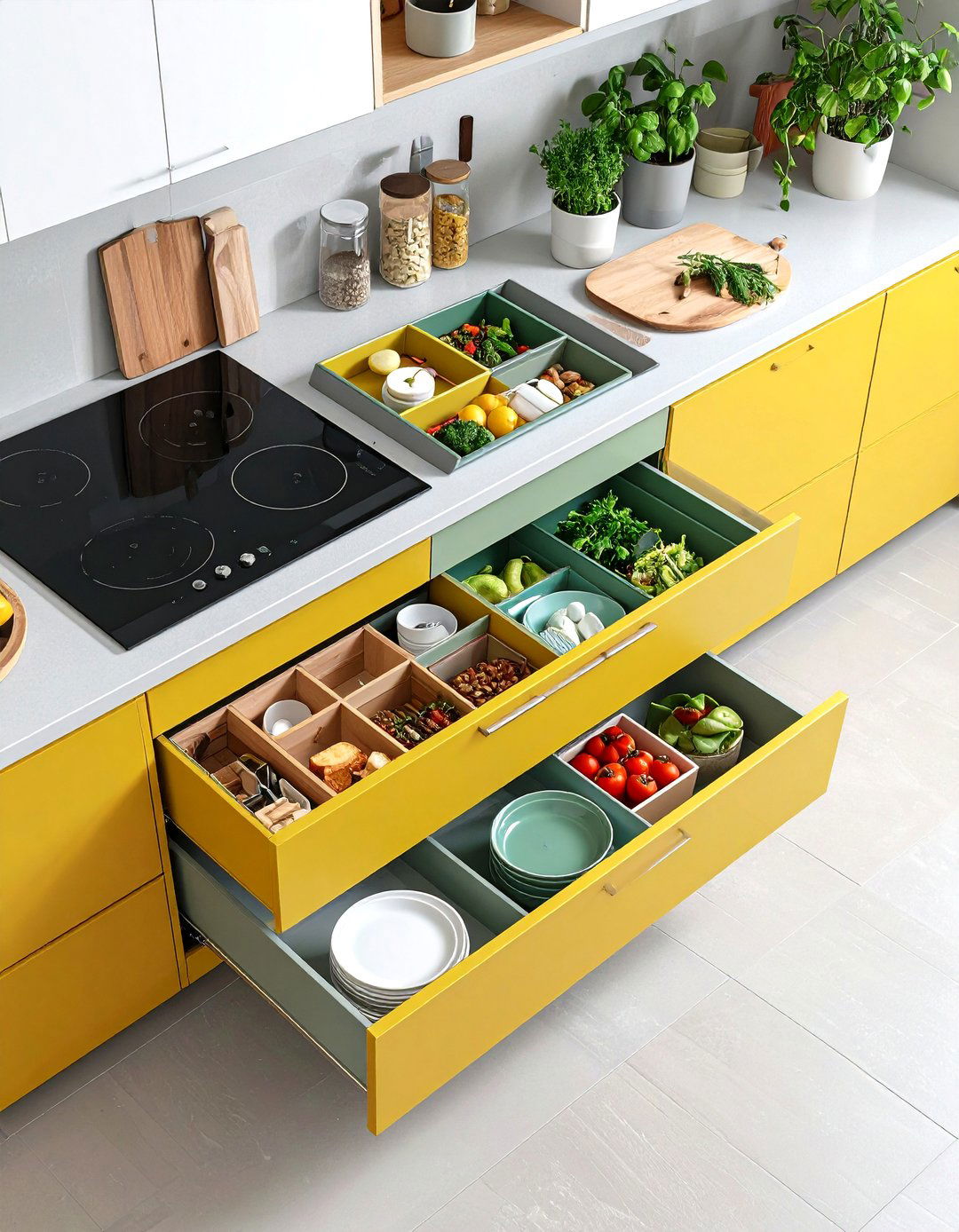
Swapping hinged doors for deep drawers keeps pots, plates, and pantry items visible from above, reducing the need to crouch and rummage. Custom organizers subdivide space so everything has a home, preventing random gadgets from cluttering countertops. Minimalism thrives when tools live exactly where they’re needed — and nowhere else.
20. Soft-Close Mechanisms Keep the Kitchen Peaceful
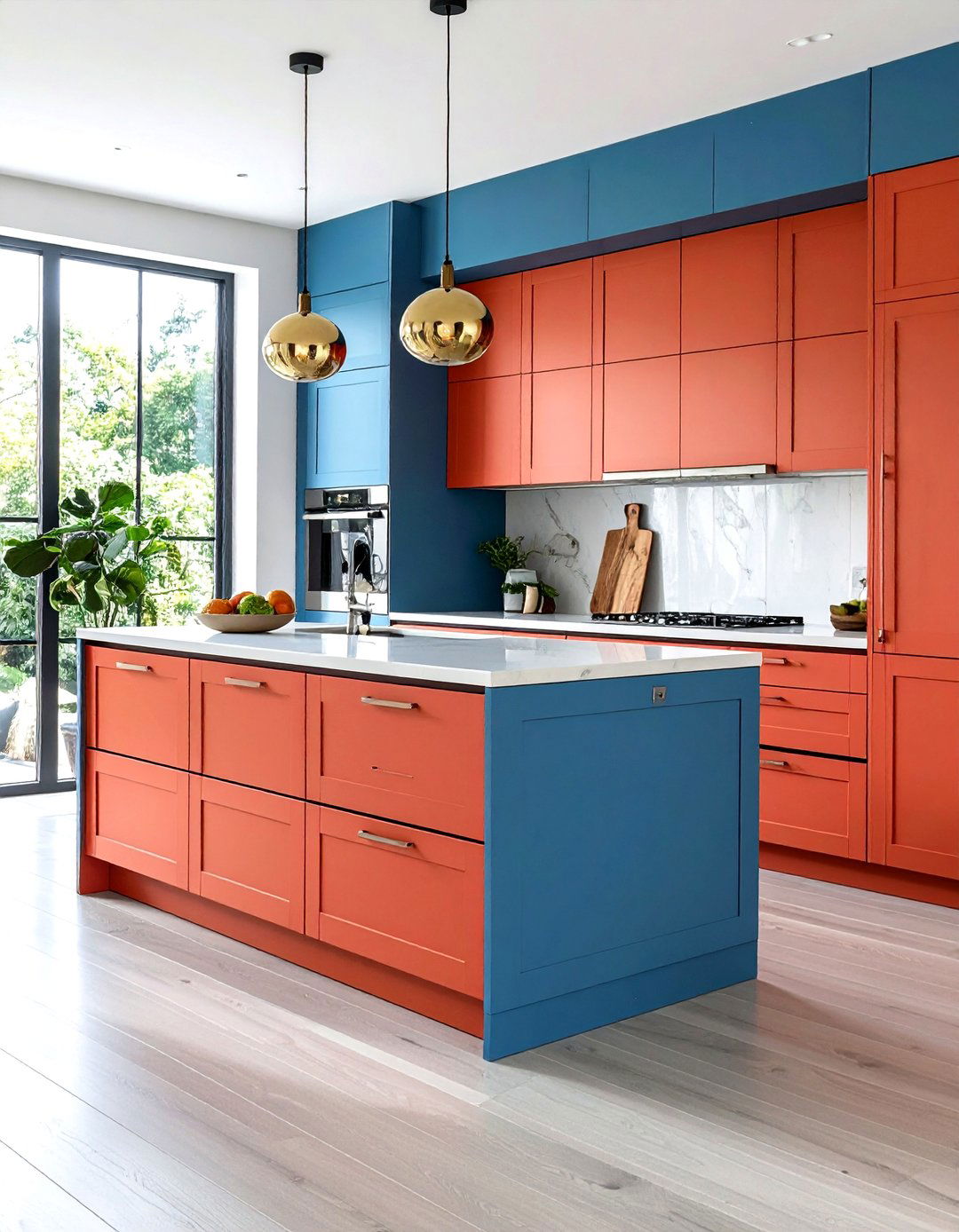
Nothing shatters a serene cooking session like slamming doors. Factory-installed soft-close hinges and drawer glides let panels glide shut with a whisper, preserving both cabinetry and the calm atmosphere. Retrofitting is a doable DIY that takes under an hour, making it a high-value upgrade for rental kitchens aiming to look bespoke.
21. Sliding Pocket Doors Hide the Working Zone
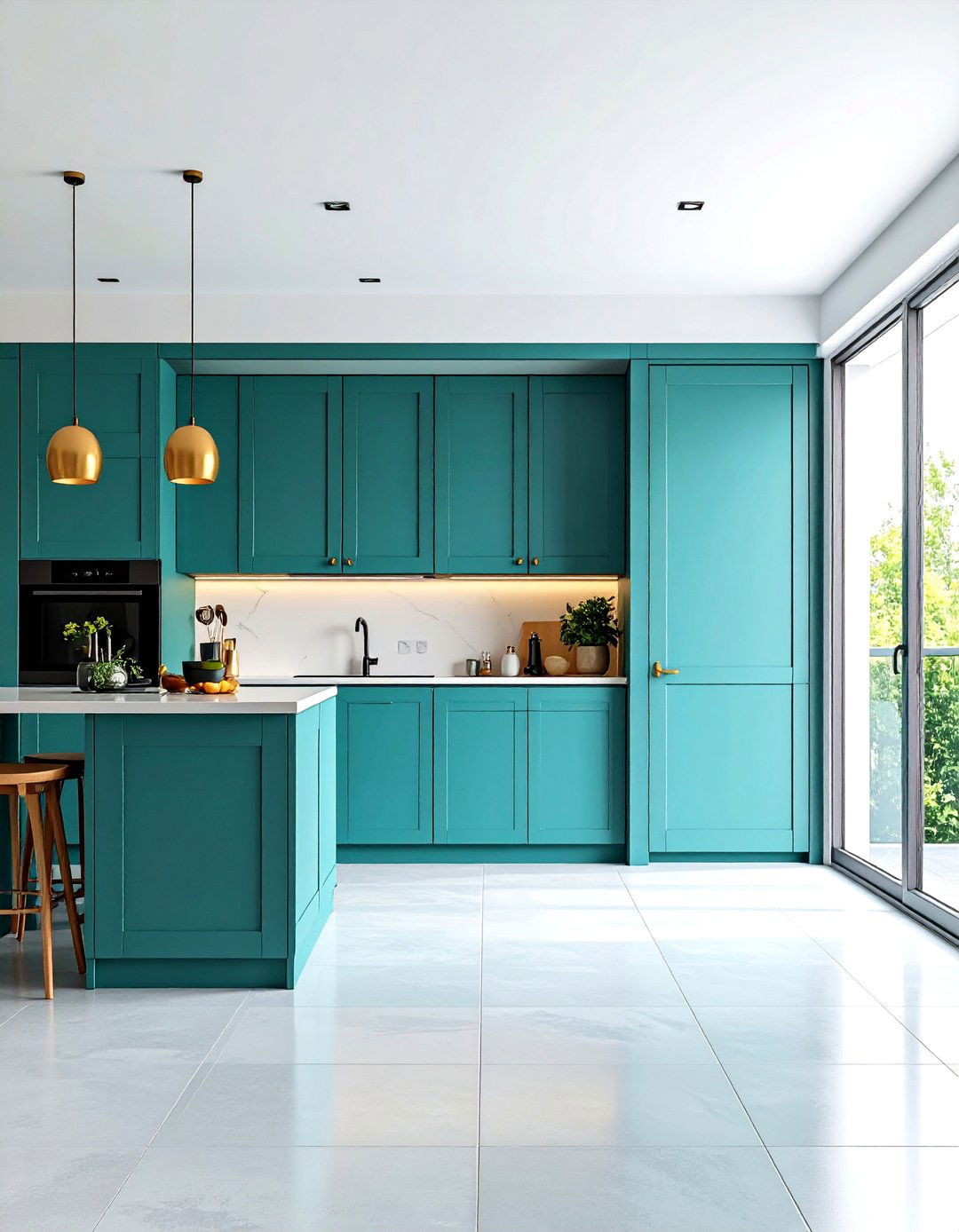
For open-plan lofts, full-height pocket doors slide across the kitchen when guests arrive, transforming the space into an unbroken wall. Because the doors recess into cavities, they occupy zero floor area when open, unlike barn doors that sit proud. Finish them in the same plaster or paneling as adjacent walls so, when closed, the kitchen disappears entirely.
22. Mobile Cart Modules Bring Flexibility
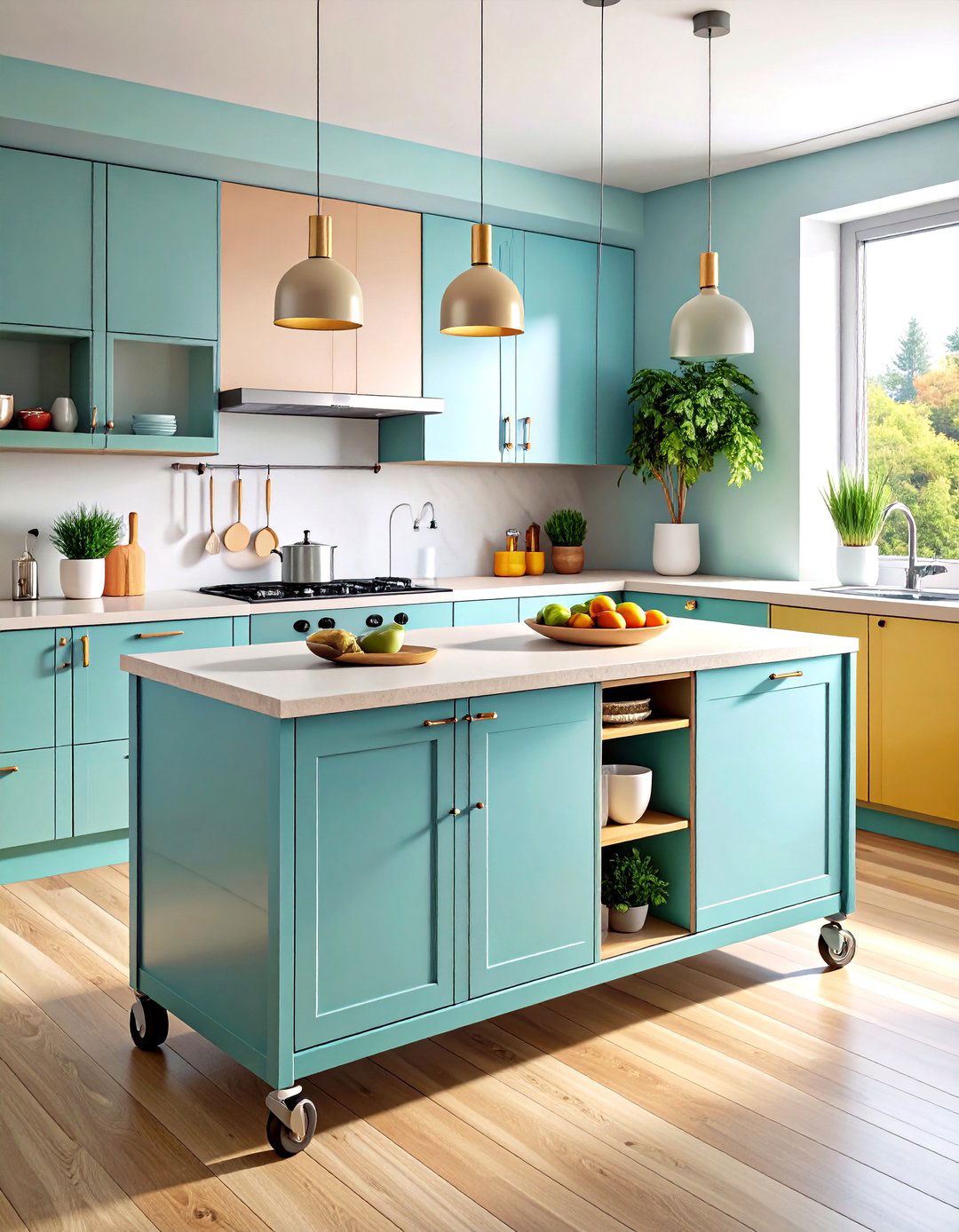
A slim island on lockable casters delivers prep space during cooking, moves aside for yoga at dawn, and wheels into the garden for al-fresco dining. Choose a design with concealed side rails so the cart looks built-in when parked. Matching countertop material ties the piece to permanent cabinets, keeping visual unity even in motion.
23. Mixed-Material Accents Add Quiet Contrast

Minimalist needn’t mean monochrome every time. Designers increasingly top wood perimeters with stone islands, or pair smooth quartz with fluted oak bars. The contrast highlights each material’s beauty without adding extra objects. Limiting the palette to two or three finishes keeps the eye calm while giving the room depth.
24. Slim Indoor Herb Strip Infuses Life into the Kitchen
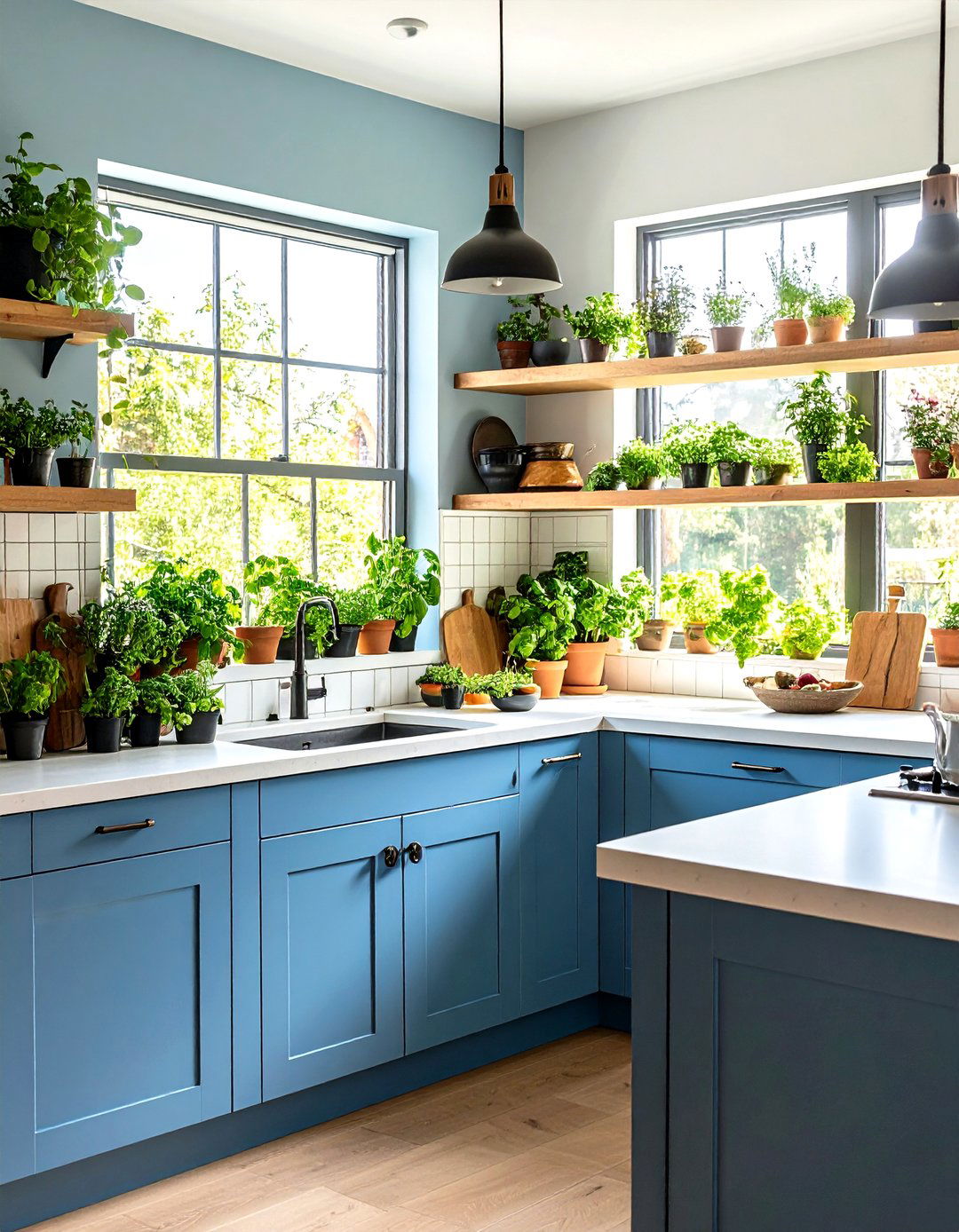
A narrow trough planter built into the windowsill or island edge brings fresh basil and rosemary within arm’s reach while adding the only ornament a minimalist kitchen really needs: living green. Modern kits include grow lights and self-watering reservoirs, so the garden thrives with almost no effort — perfect for the “less is more” cook.
25. Consistent Finishes Unite Kitchen and Living Areas
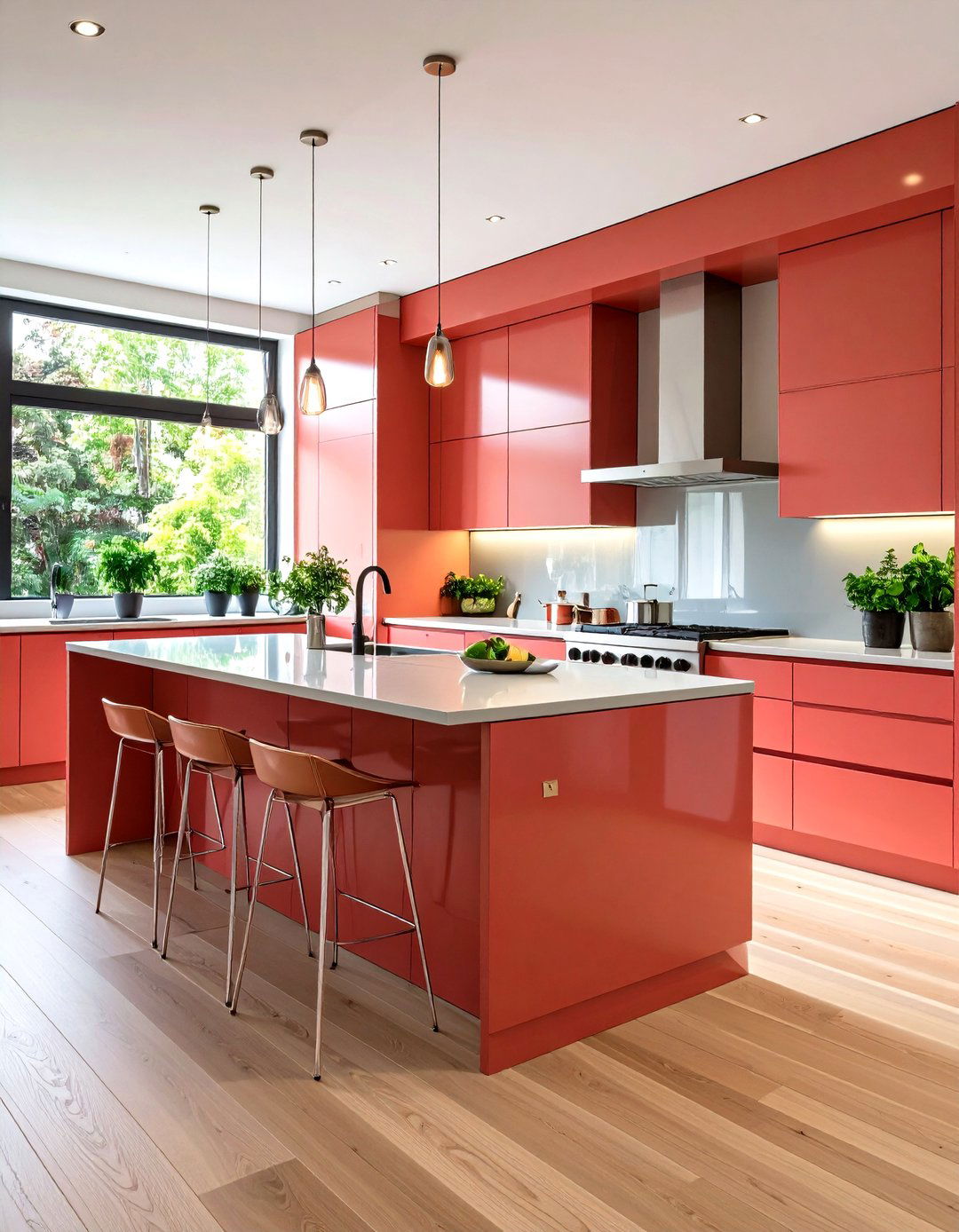
The surest way to keep an open kitchen from bossing the room is to repeat flooring, wall color, and even metal tones across adjoining zones. By merging palettes, the cooking corner reads as an elegant extension of the lounge rather than a separate workstation. Removing a redundant half-wall or upper cabinet run often yields enough breathing space to achieve this fluid flow.
Conclusion:
The most successful minimalist kitchens prove that editing, not deprivation, is the real art. By hiding appliances, mastering subtle storage, and choosing hardworking materials — handleless fronts, quartz counters, toe-kick drawers, and soft-close everything — you gain a room that feels effortlessly serene yet ready for serious cooking. Whether you lean into graphic black and white or whisper-soft neutrals, the common thread is intentionality: every element earns its place, supports daily rituals, and quietly celebrates the joy of less.


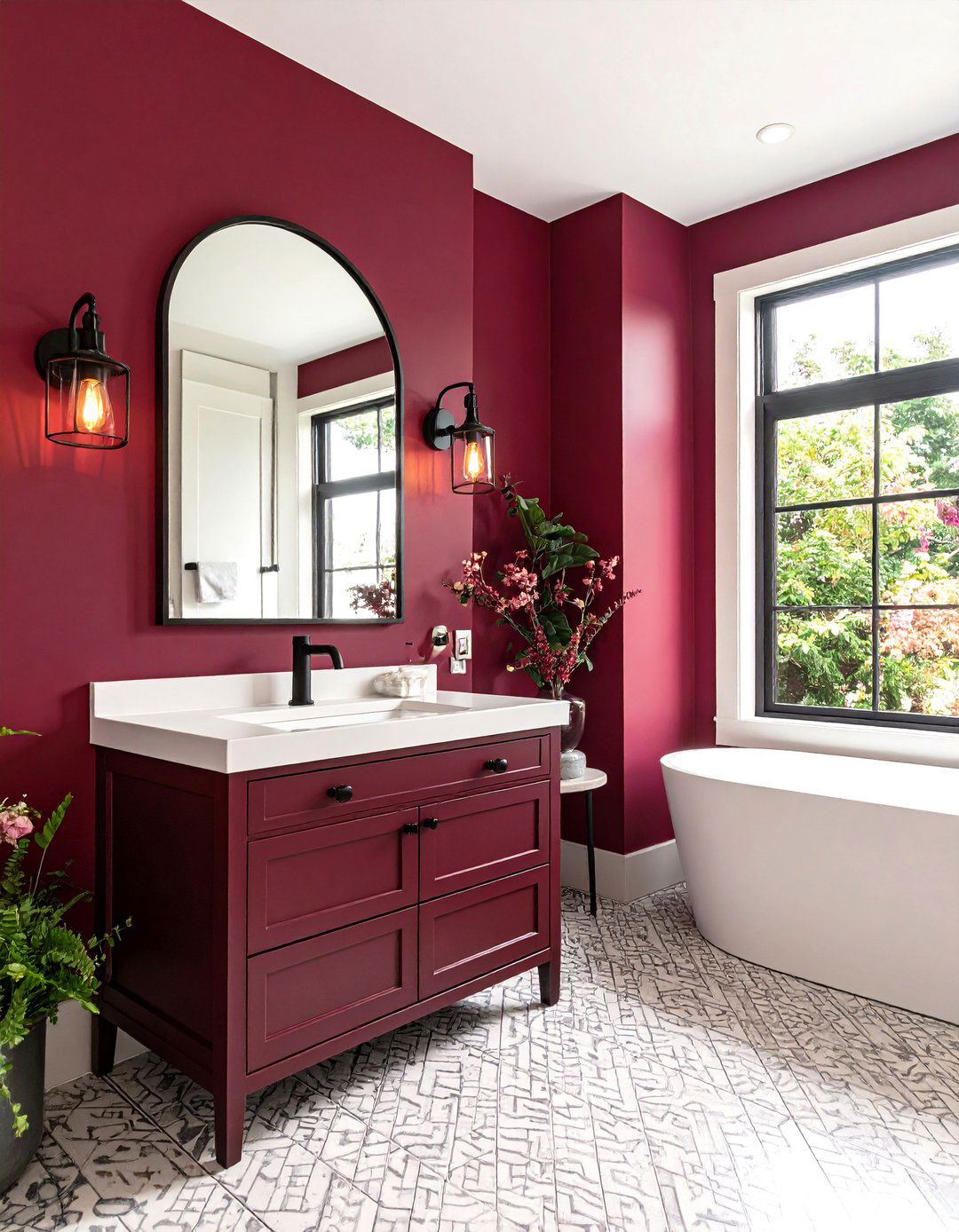
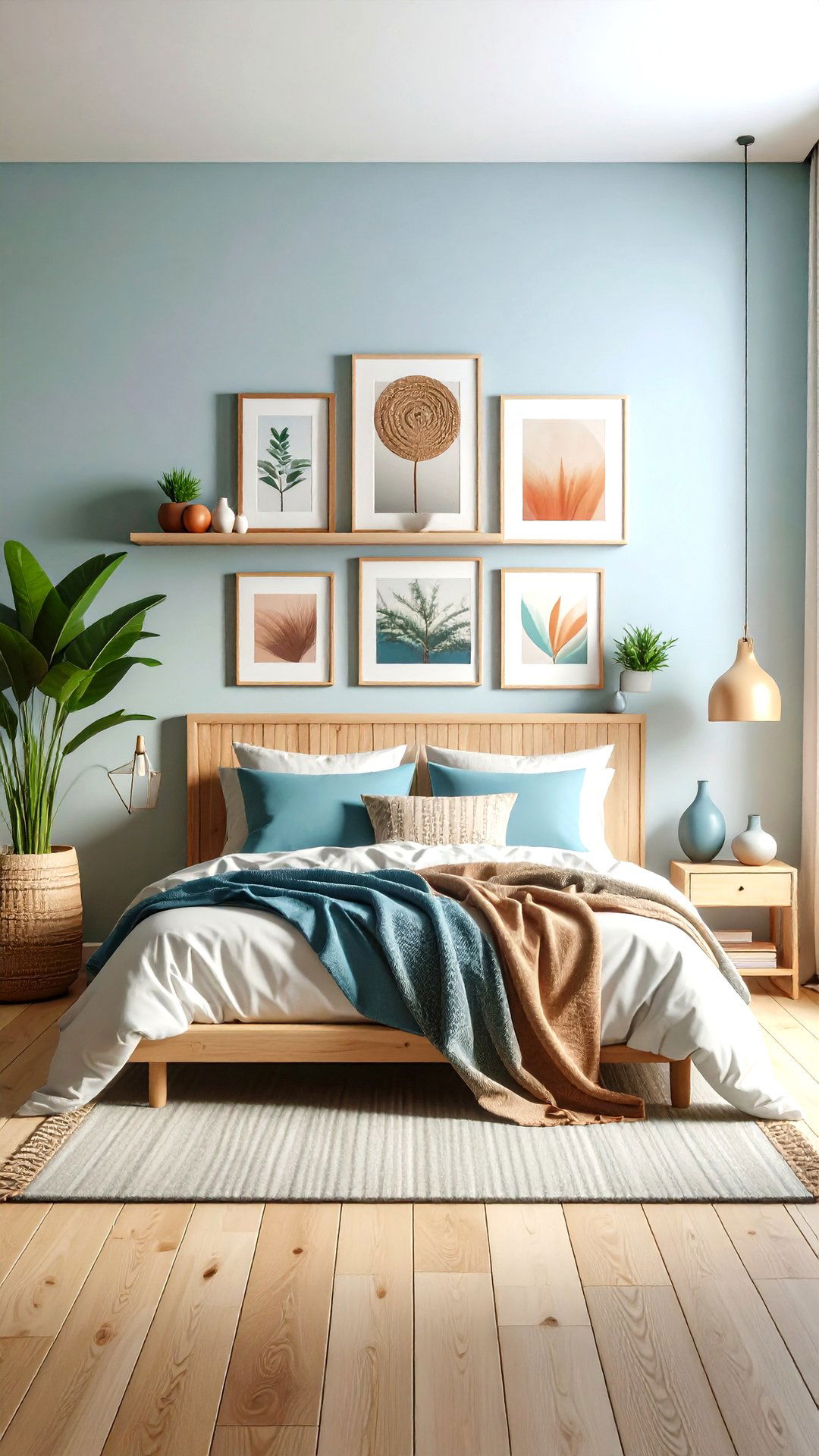
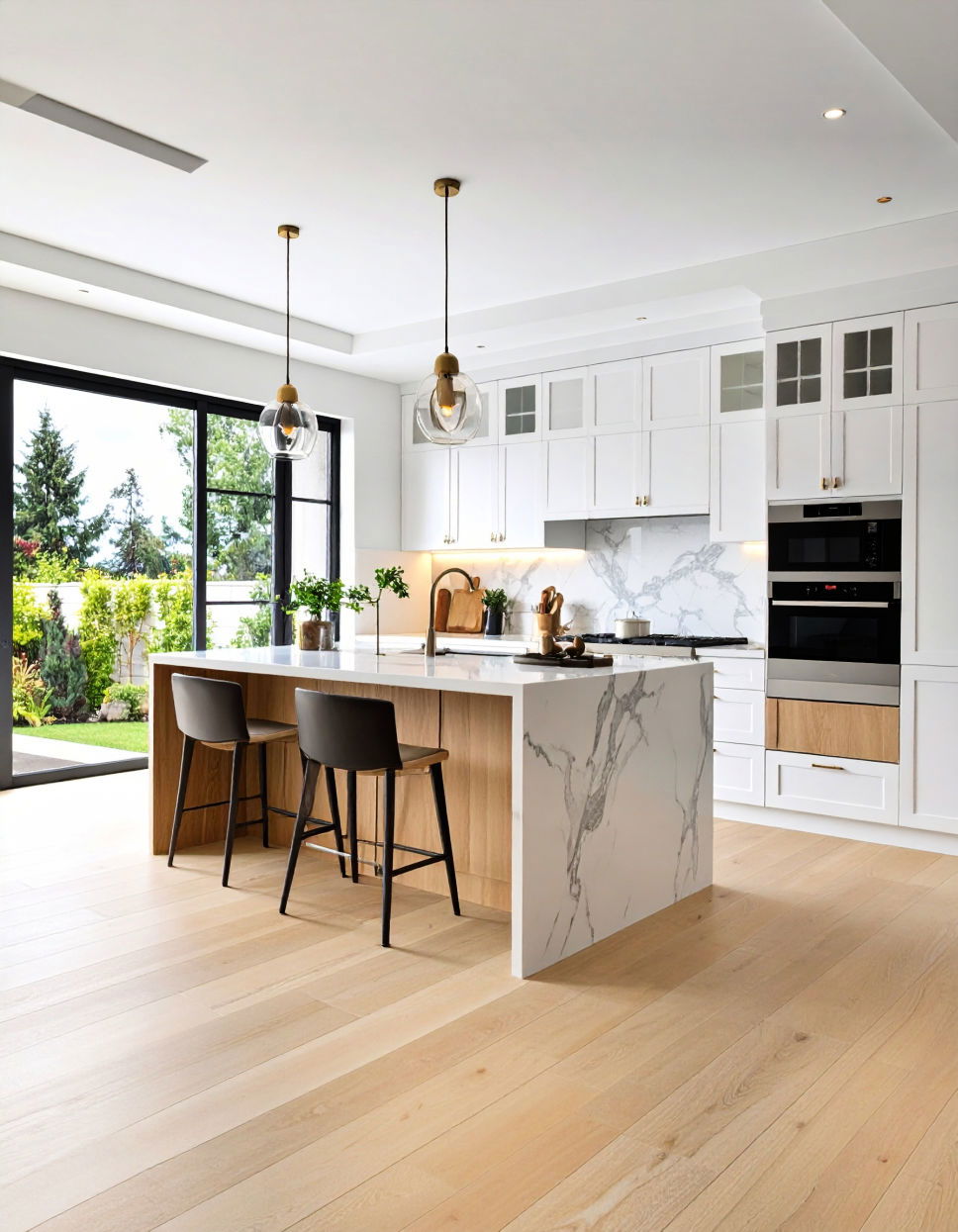
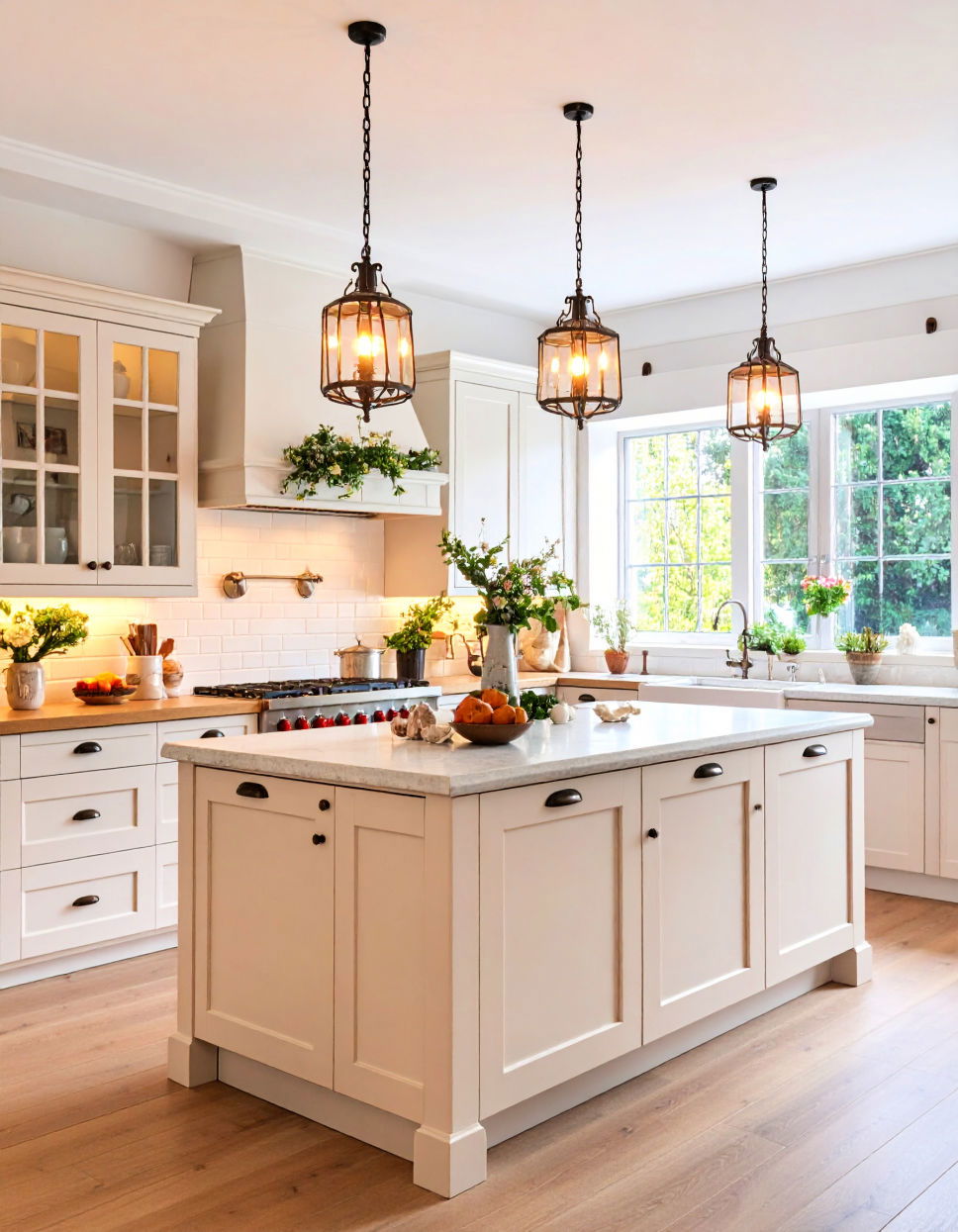
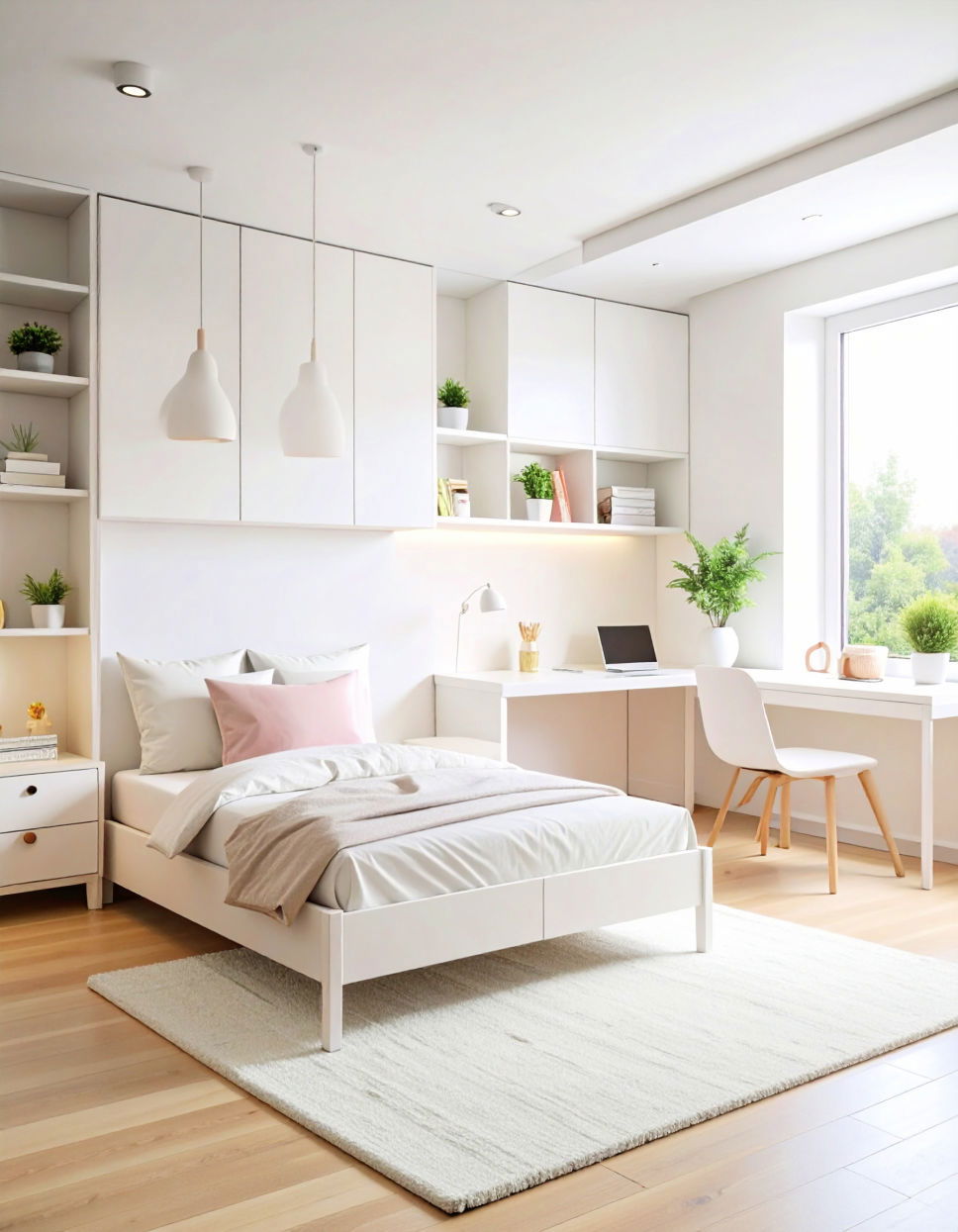
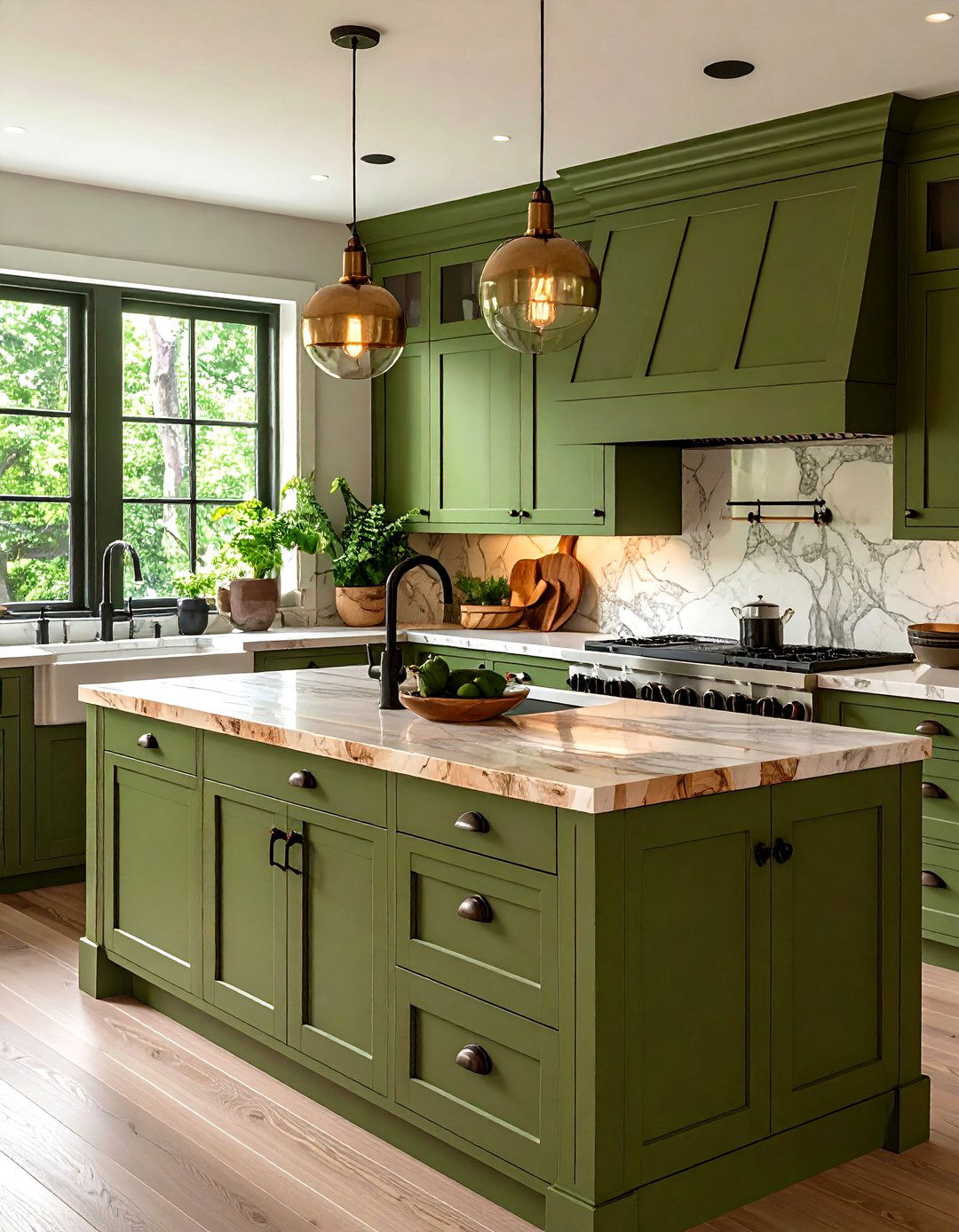
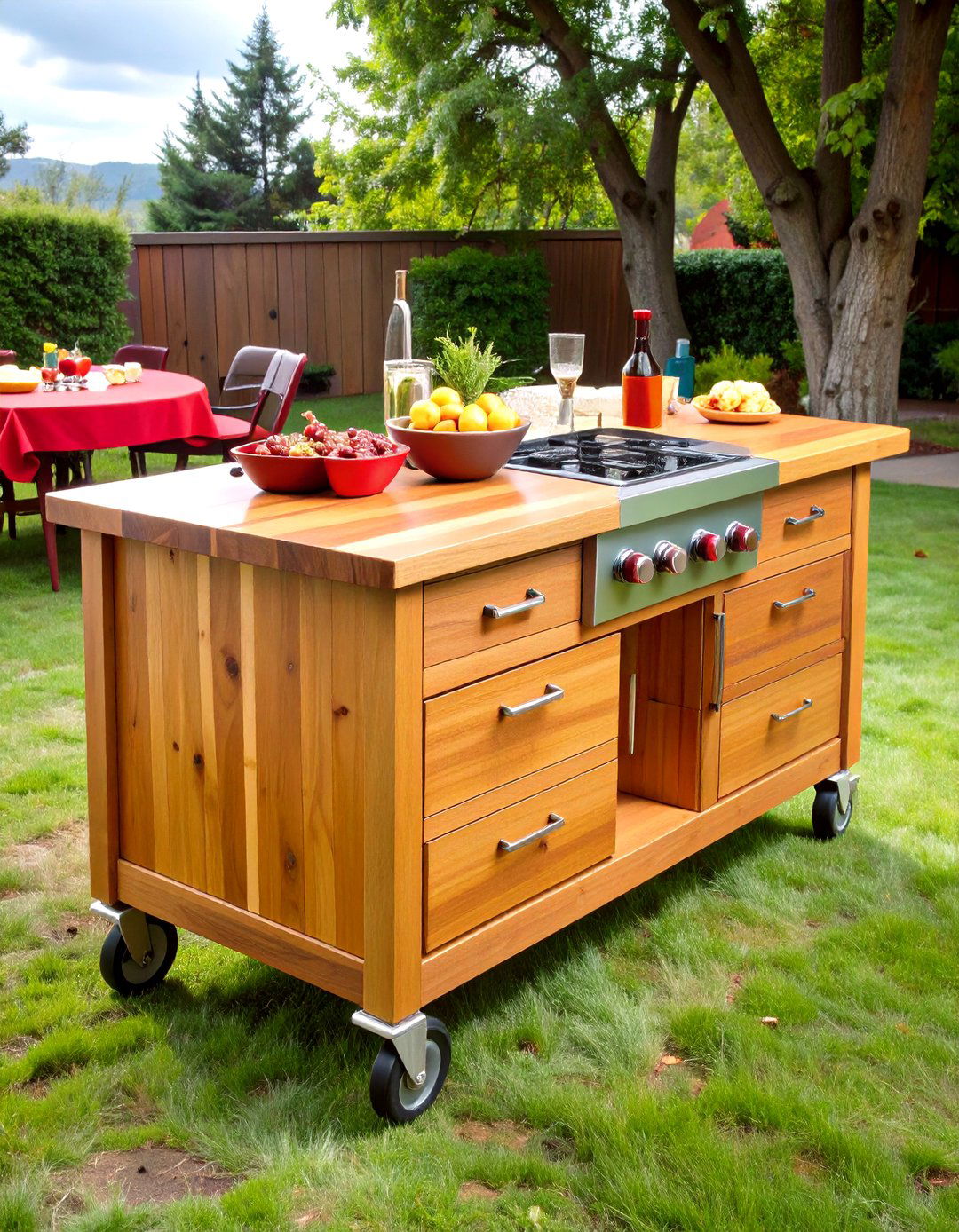
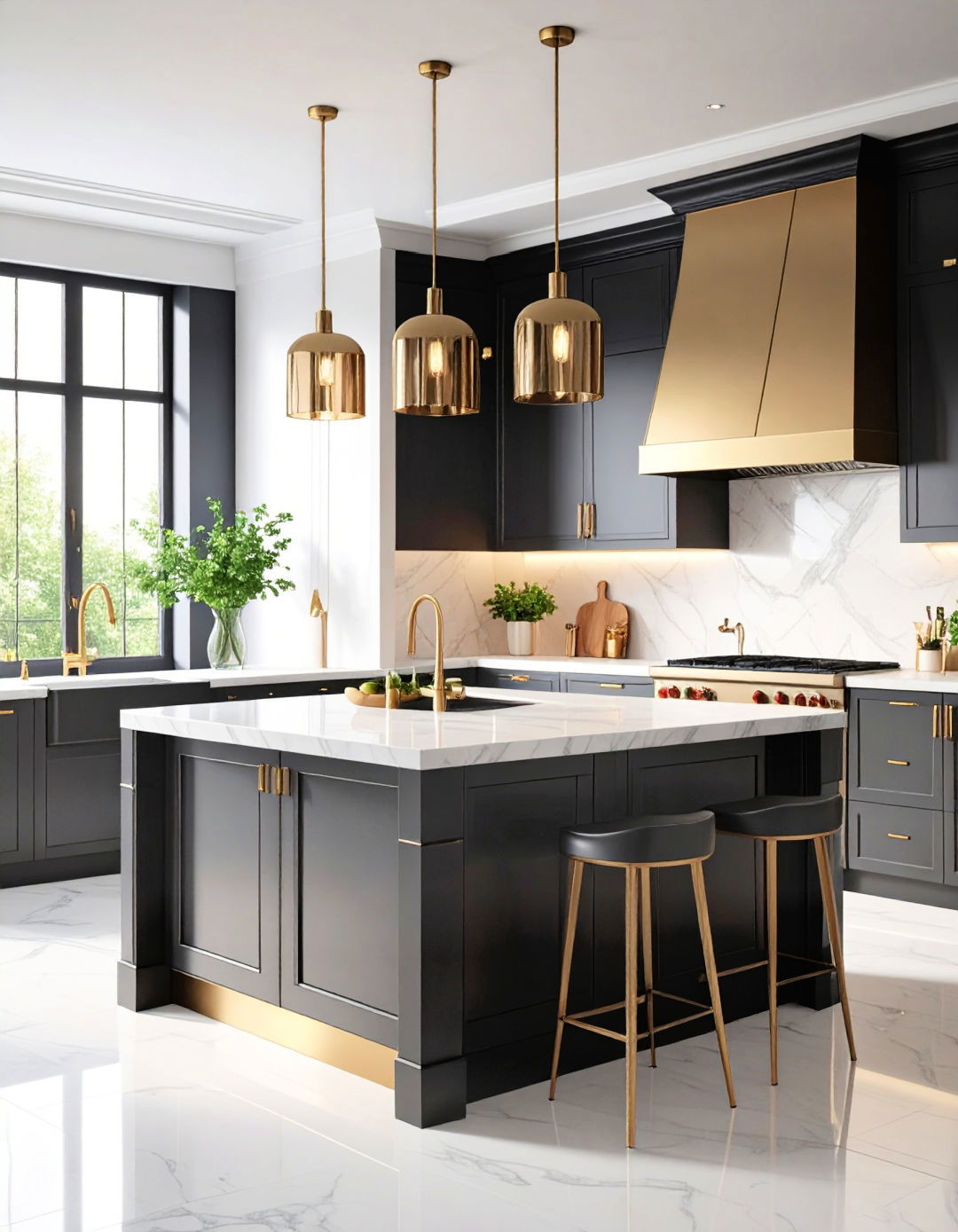
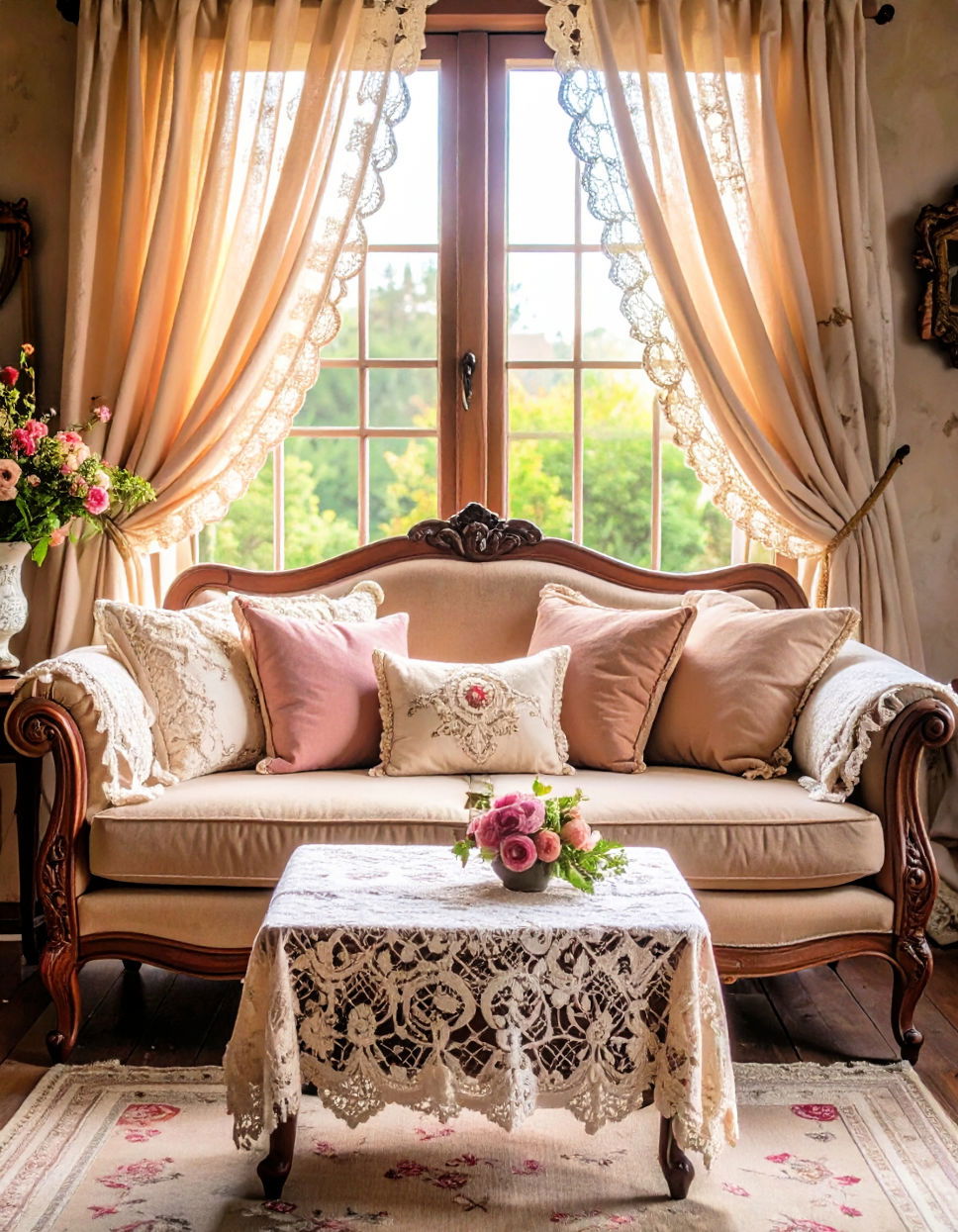
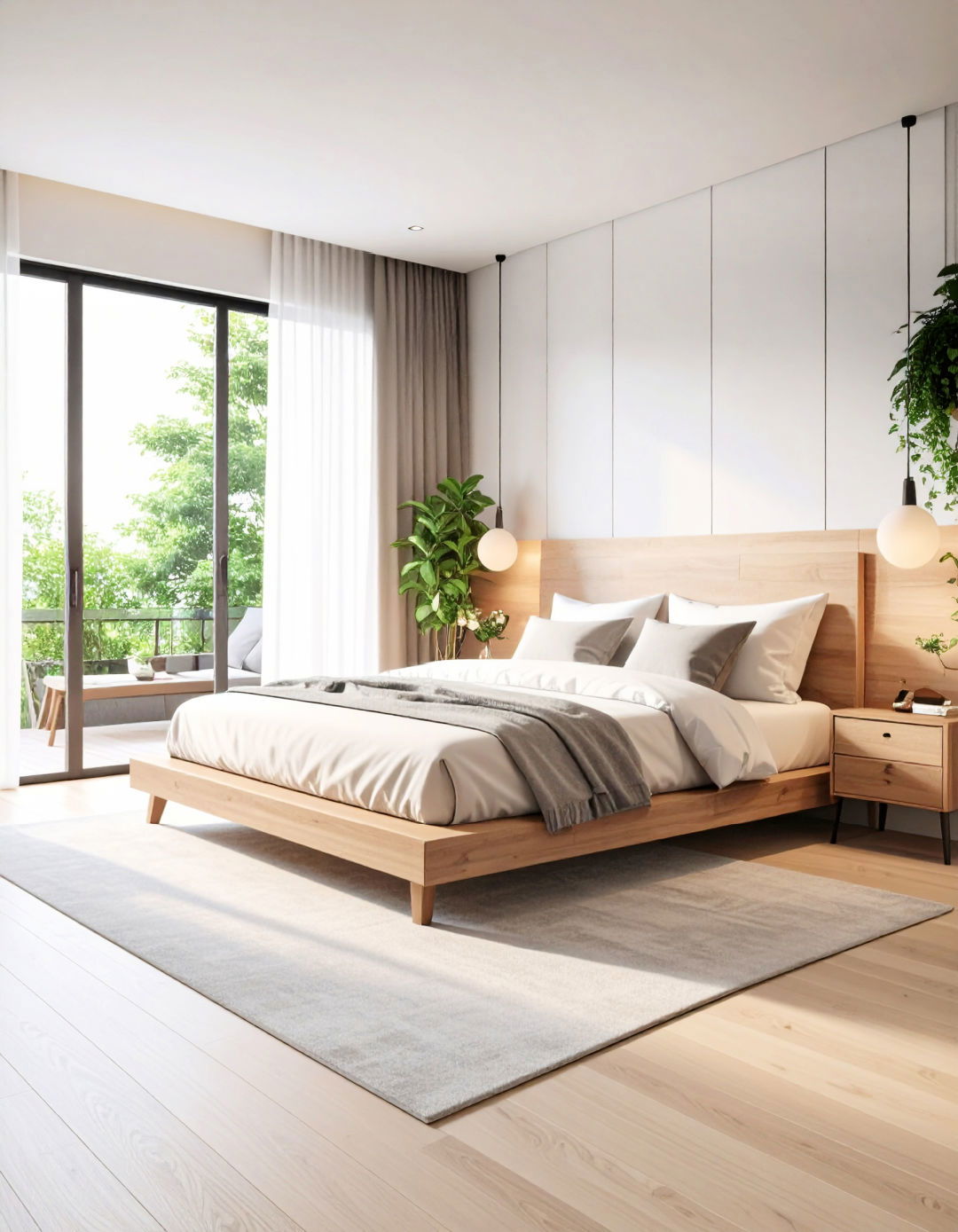
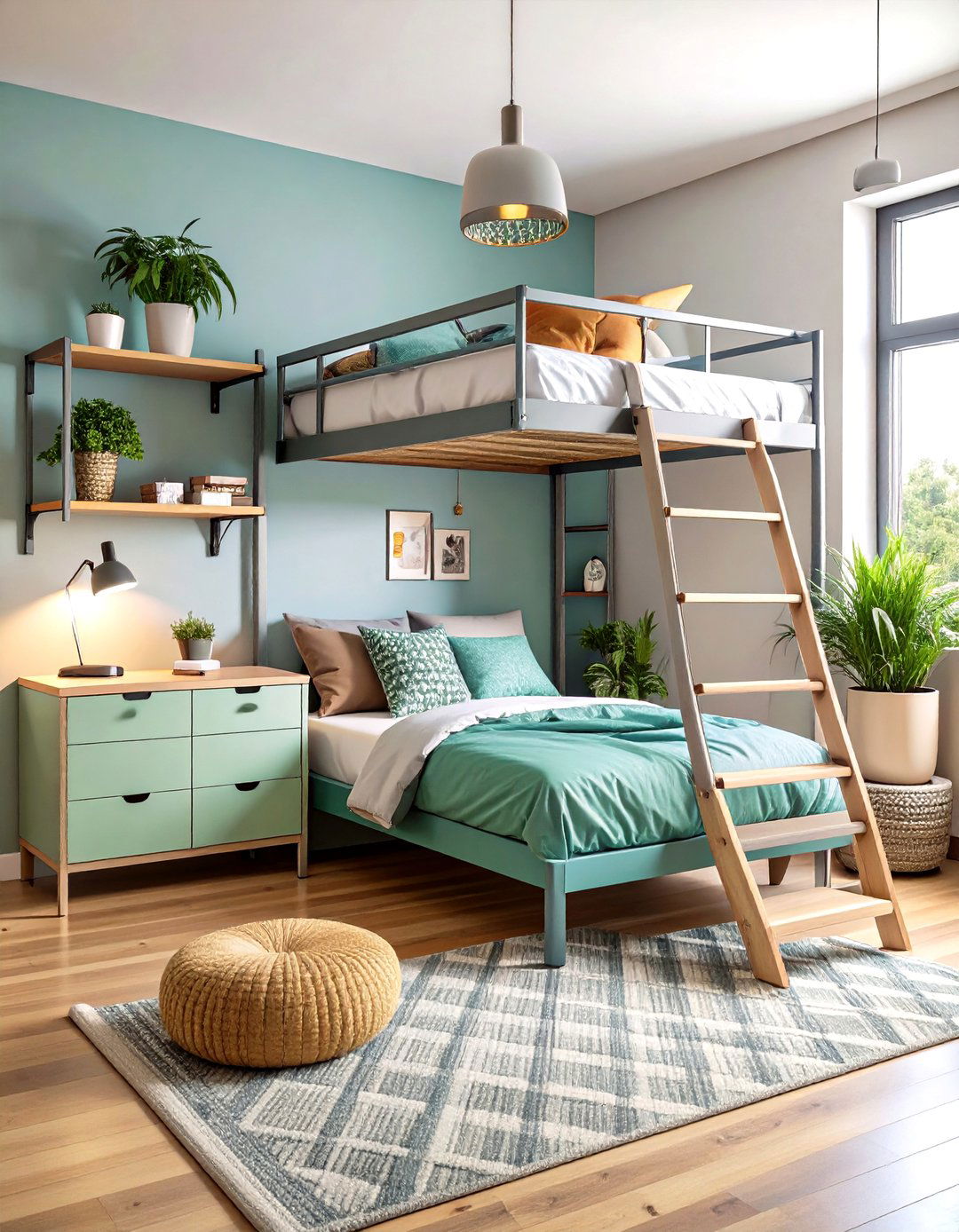
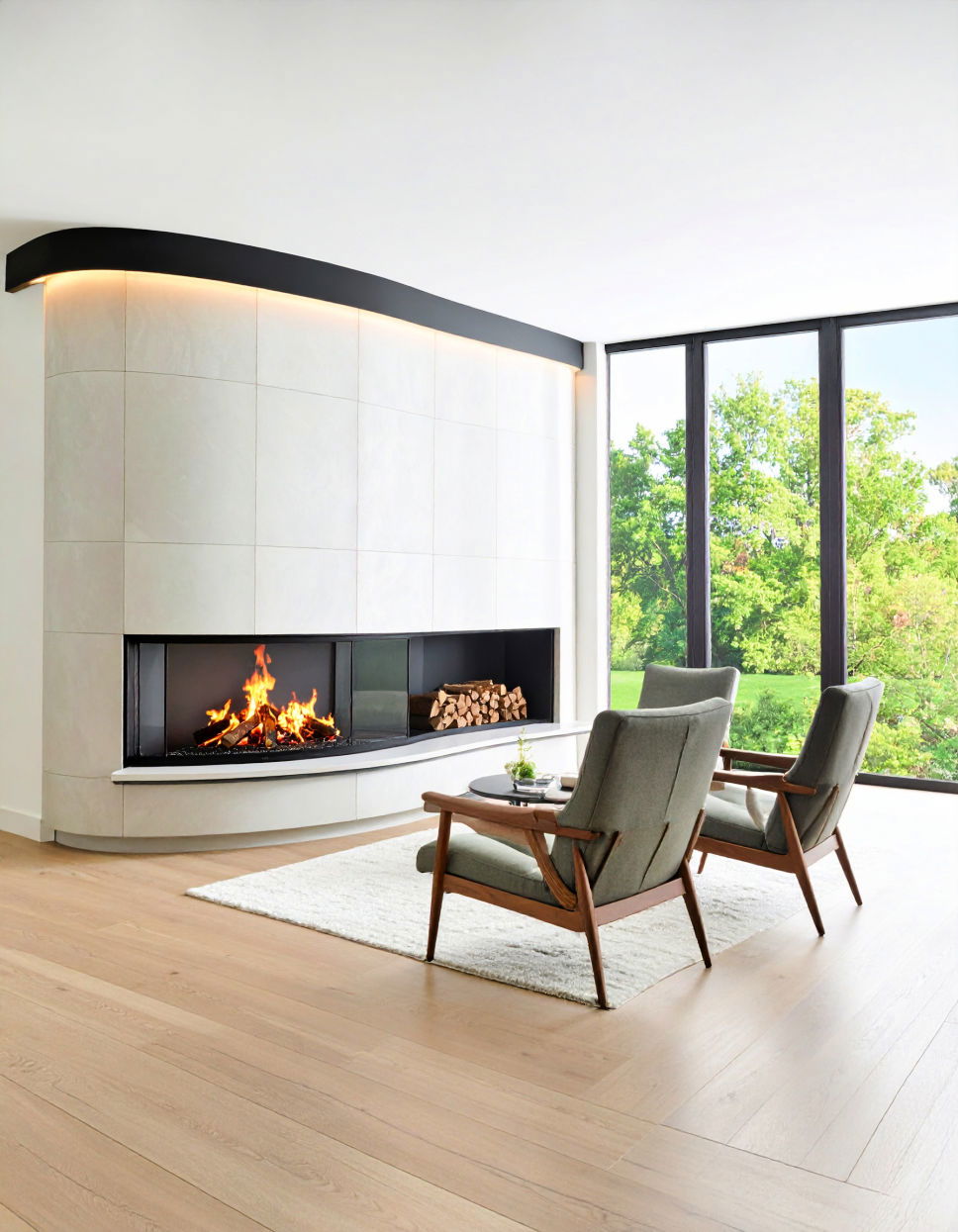
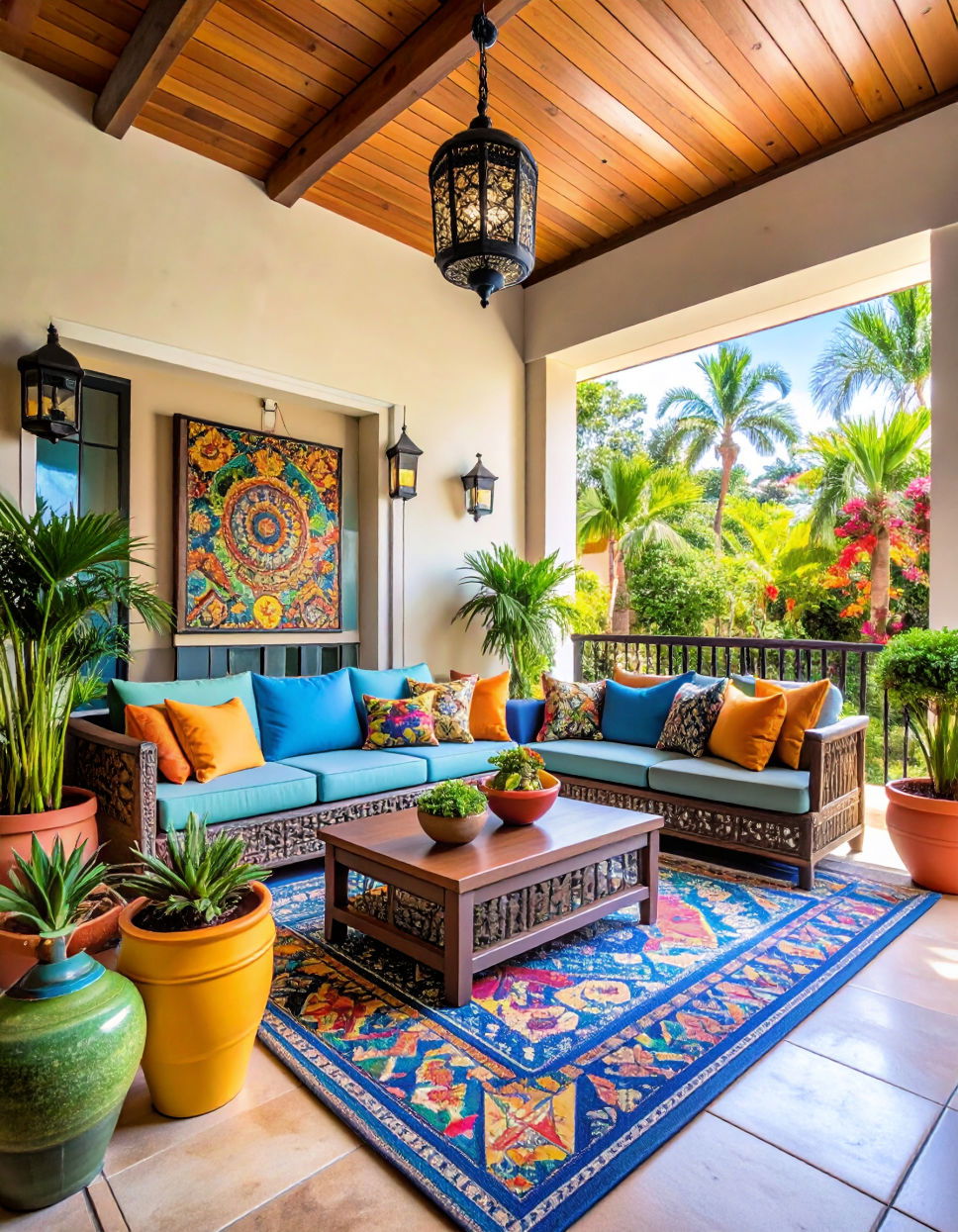
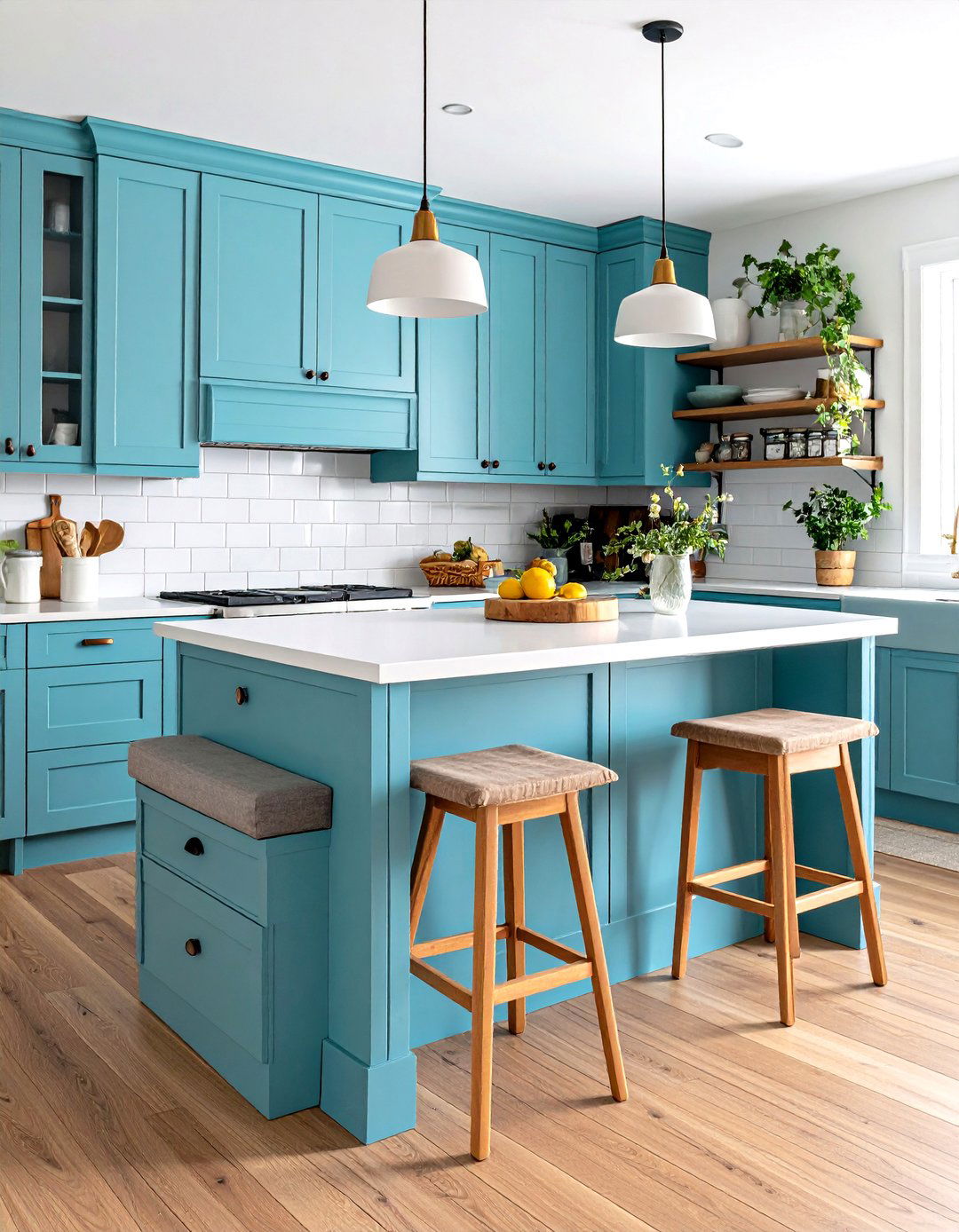
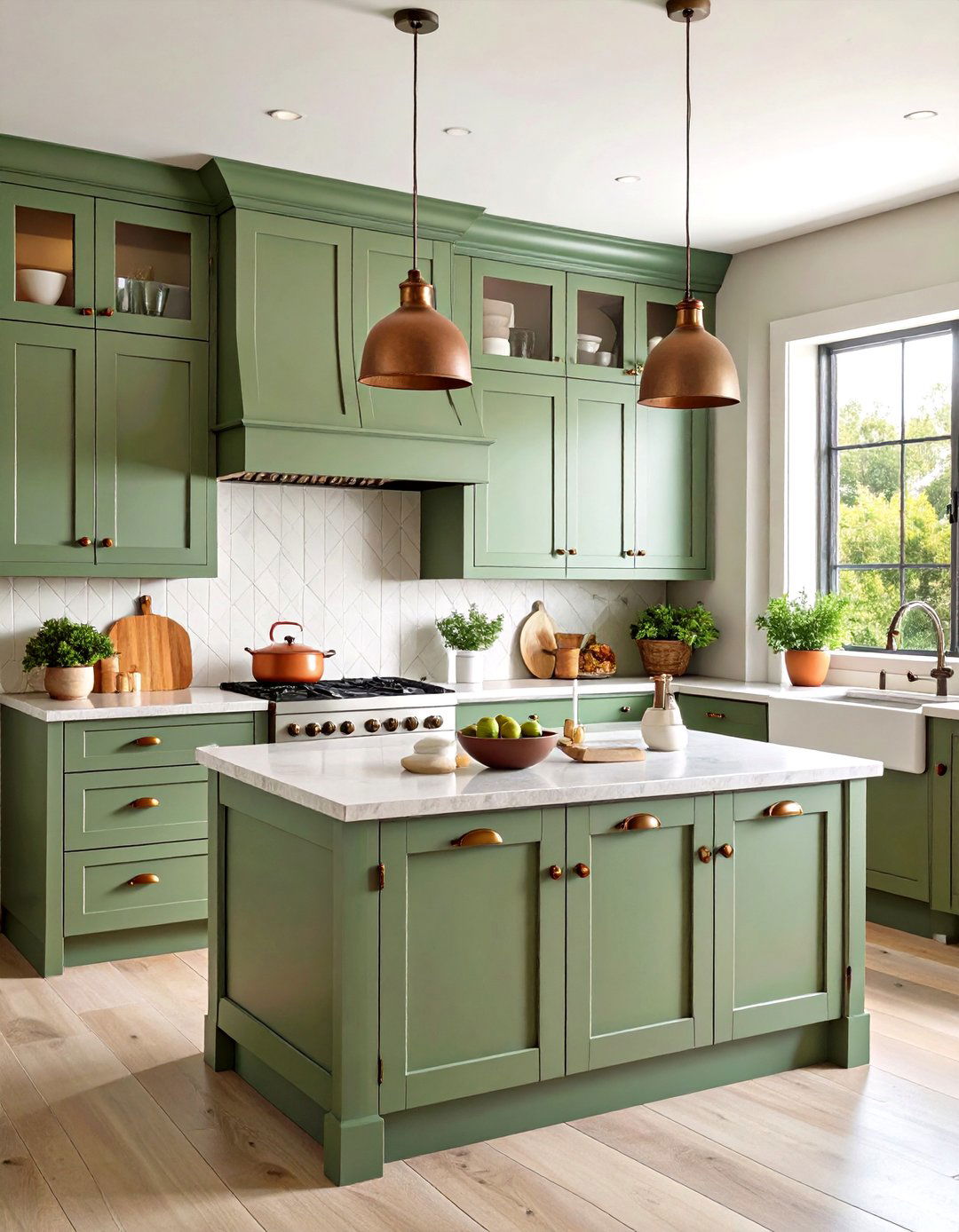
Leave a Reply